
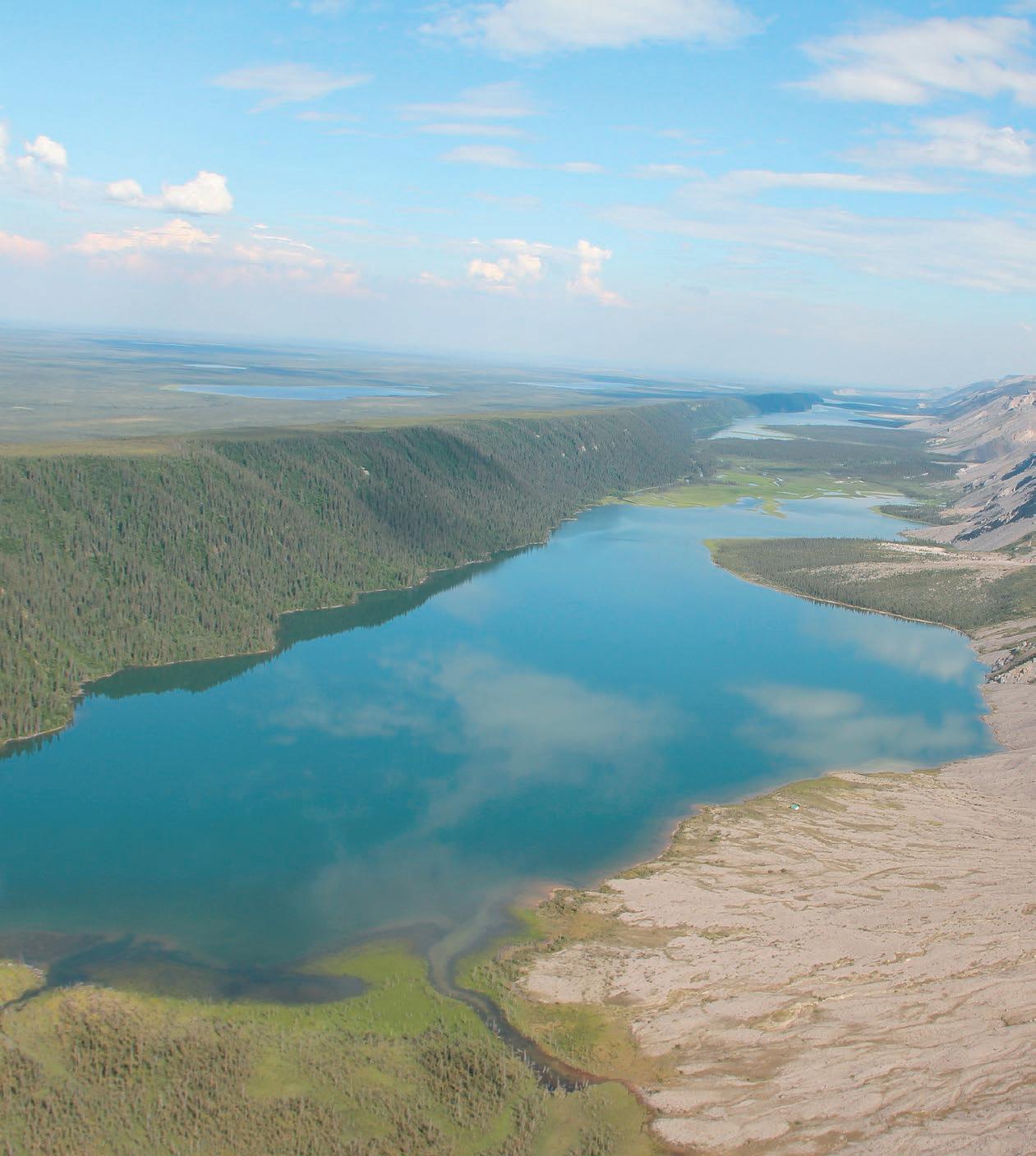
15 Exploring Below the Salt in Angola and Beyond 28 Go Take a Hike 30 The Value of Borehole Image Logs –Part 1: Introduction to Borehole Image Logs and Why They Should be Run $10.00 JANUARY 2015 VOLUME 42, ISSUE 01 Canadian Publication Mail Contract – 40070050
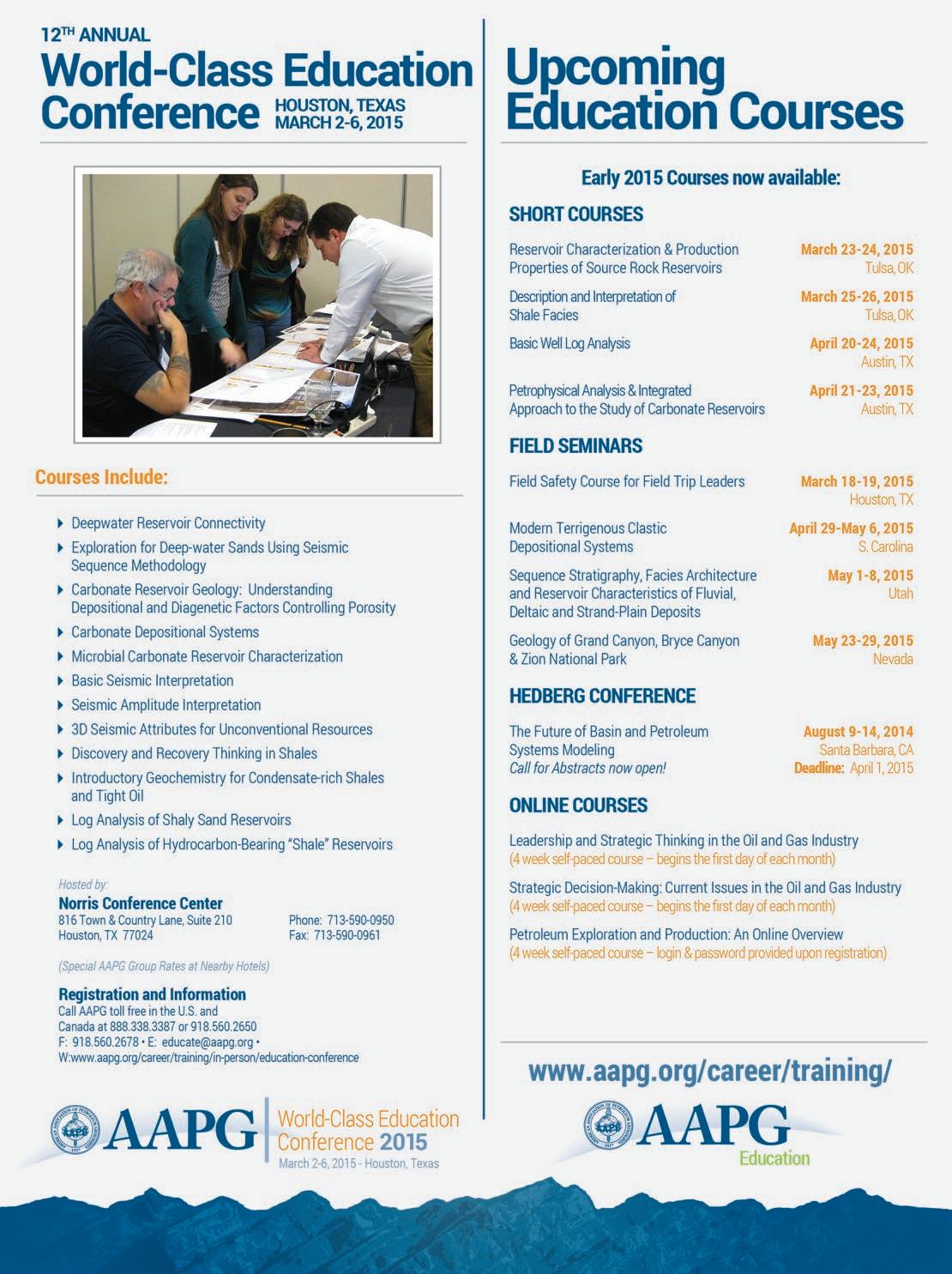
CSPG OFFICE
#110, 333 – 5th Avenue SW
Calgary, Alberta, Canada T2P 3B6
Tel: 403-264-5610
Web: www.cspg.org
Please visit our website for all tickets sales and event/course registrations
Office hours: Monday to Friday, 8:00am to 4:30pm
The CSPG Office is Closed the 1st and 3rd Friday of every month.
OFFICE CONTACTS
Membership Inquiries
Tel: 403-264-5610
Email: membership@cspg.org
Technical/Educational Events: Biljana Popovic
Tel: 403-513-1225 Email: biljana.popovic@cspg.org
Advertising Inquiries: Emma MacPherson
Tel: 403-513-1230 Email: emma.macpherson@cspg.org
Sponsorship Opportunities: Candace Seepersad
Tel: 403-513-1227 Email: candace.seepersad@cspg.org
Conference Inquiries: Candace Seepersad
Tel: 403-513-1233 Email: candace.seepersad@cspg.org
CSPG Educational Trust Fund: Kasandra Amaro
Tel: 403-513-1234 Email: kasandra.amaro@cspg.org
Accounting Inquiries: Eric Tang
Tel: 403-513-1232 Email: eric.tang@cspg.org
Executive Director: Lis Bjeld
Tel: 403-513-1235, Email: lis.bjeld@cspg.org
EDITORS/AUTHORS
Please submit RESERVOIR articles to the CSPG office. Submission deadline is the 23rd day of the month, two months prior to issue date. (e.g., January 23 for the March issue).
To publish an article, the CSPG requires digital copies of the document. Text should be in Microsoft Word format and illustrations should be in TIFF format at 300 dpi., at final size.
Technical Editor
Hugh S. Mosher
Nunaga Resources Ltd.
M.: 403-809-9997
Email: hsmosher@telus.net
CSPG Coordinating Editor
Emma MacPherson, Communications Coordinator, CSPG
Tel: 403-513-1230, emma.macpherson@cspg.org
The RESERVOIR is published 11 times per year by the Canadian Society of Petroleum Geologists. This includes a combined issue for the months of July and August. The purpose of the RESERVOIR is to publicize the Society’s many activities and to promote the geosciences. We look for both technical and non-technical material to publish.
The contents of this publication may not be reproduced either in part or in full without the consent of the publisher. Additional copies of the RESERVOIR are available at the CSPG office. No official endorsement or sponsorship by the CSPG is implied for any advertisement, insert, or article that appears in the Reservoir unless otherwise noted. All submitted materials are reviewed by the editor. We reserve the right to edit all submissions, including letters to the Editor. Submissions must include your name, address, and membership number (if applicable). The material contained in this publication is intended for informational use only. While reasonable care has been taken, authors and the CSPG make no guarantees that any of the equations, schematics, or devices discussed will perform as expected or that they will give the desired results. Some information contained herein may be inaccurate or may vary from standard measurements. The CSPG expressly disclaims any and all liability for the acts, omissions, or conduct of any third-party user of information contained in this publication. Under no circumstances shall the CSPG and its officers, directors, employees, and agents be liable for any injury, loss, damage, or expense arising in any manner whatsoever from the acts, omissions, or conduct of any third-party user.
Designed and Printed by The Data Group of Companies, Calgary, Alberta.

RESERVOIR ISSUE 01 • JANUARY 2015 3 JANUARY 2015 – VOLUME 42, ISSUE 01 ARTICLES CSPG Core Conference 14 Exploring Below the Salt in Angola and Beyond 15 2014 CSPG Awards 20 The 2015 CSPG Executive Committee 22 Honorary Member – Dr. Jeffrey Packard 26 Go Take a Hike 28 The Value of Borehole Image Logs – Part 1: Introduction to Borehole Image Logs and Why They Should be Run ....................................................................... 30 DEPARTMENTS Message from the Board .......................................................................................................... 5 Photo of the Month ................................................................................................................... 6 Technical Luncheons ................................................................................................................. 9 Division Talks ........................................................................................................................... 12 Rock Shop ............................................................................................................................ 7, 19
FRONT COVER
Doris Lake, Carcajou Range, Northwest Territories. Alluvial fans discharge into the lakes between the Stony Anticline of the Carcajou Range (right) and the Imperial Syncline (left). Photo by Wayne Laturnas.
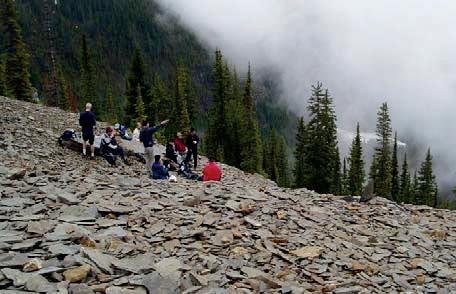


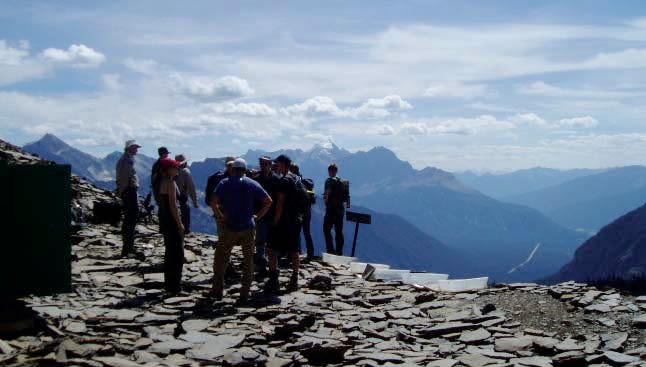
Sessions & Session Chairs
The Nature of Unconventional Carbonate Reservoirs
Jay Gregg & Mike Grammer | Oklahoma State University
Carbonate Reservoirs in Structurally Complex Regions
Rudy Swennen | Division of Geology, KU Leuven
The Nature of Intensely Fractured, Vuggy Carbonates
Ron Nelson | Broken N Consulting, Texas
Alex J. MacNeil | Osum Oil Sands, Calgary
Advances in Modeling Carbonate Systems and Reservoirs
Part 1, Methods:
Georg Warrlich | Shell , Malaysia
Rachel Wood | School of Geosciences, University of Edinburgh
Part 2, Flow in Carbonates:
Xiomara Marquez | Maersk, Doha, Qatar
Fiona Whitaker | School of Earth Sciences, University of Bristol
Advances in Diagenesis
Eva Drivet | Drivet Consulting, Calgary
Conxita Taberner | Shell, Netherlands
Dolostones – The Nature of Dolostones in the Geologic Record
Hans Machel | University of Alberta, Edmonton
Jeff Lonnee | Shell, Qatar
2015 CSPG/SEPM Mountjoy Conference 2015 CSPG/SEPM Mountjoy Conference ABSTRACT SUBMISSION NOW OPEN ABSTRACT SUBMISSION NOW OPEN For more information visit: For more information visit: www.cspg.org/Conferences www.cspg.org/Conferences Deadline for Abstracts: Deadline for Abstracts: March 31st, 2015 March 31st, 2015














CSPG BOARD
PRESIDENT
Tony Cadrin • Journey Energy Inc. president@cspg.org Tel: 403.303.3493
PRESIDENT ELECT
Greg Lynch • Shell Canada Ltd. presidentelect@cspg.org Tel: 403.384.7704
PAST PRESIDENT
Dale Leckie pastpresident@cspg.org
FINANCE DIRECTOR
Astrid Arts • Cenovus Energy directorfinance@cspg.org Tel: 403.766.5862
FINANCE DIRECTOR ELECT
Scott Leroux • Long Run Exploration directorfinanceelect@cspg.org 403.716.3205
DIRECTOR
Mark Caplan • Athabasca Oil Corp. mcaplan@atha.com Tel: 403.975.7701
DIRECTOR
Milovan Fustic • Statoil Canada Ltd. publications@cspg.org Tel: 403.724.3307
DIRECTOR
Michael LaBerge • Channel Energy Inc. Memberservices@cspg.org Tel: 403.301.3739
DIRECTOR
Ryan Lemiski • Nexen Energy ULC youngprofessionals@cspg.org Tel: 403.699.4413
DIRECTOR
Robert Mummery • Almandine Resources Inc. affiliates@cspg.org Tel: 403.651.4917
DIRECTOR
Darren Roblin • Kelt Exploration corprelations@cspg.org Tel: 587.233.0784
DIRECTOR
Jen Russel-Houston • Osum Oil Sands Corp. jrussel-houston@osumcorp.com Tel: 403.270.4768
DIRECTOR
Eric Street • Jupiter Resources estreet@jupiterresources.com Tel: 587.747.2631
EXECUTIVE DIRECTOR
Lis Bjeld • CSPG lis.bjeld@cspg.org Tel: 403.513.1235
Message from the Board
A message from Dale Leckie, Past President
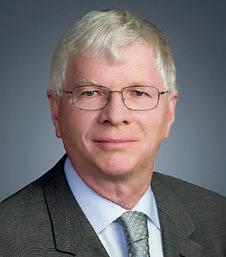
Your Professional Organization
Your professional organization – the Canadian Society of Petroleum Geologists – is strong and viable. As Gordon Stabb, CSPG 2014 Finance Director, reported last month the Society’s finances are in good shape with an appropriate reserve in place to weather any unforeseen difficulties. CSPG, a not-for-profit organization, was able to donate $75,000 to the CSPG ETF. Also, our membership remains stable.
What happened during the 2014 year? One of my personal mandates was to improve the technical side of CSPG, as this strengthens our niche and complies with our mission statement. To this end, we built relationships. These relationships took the form of co-operative technical ventures with other societies.
2014 GeoConvention FOCUS , partnered with CSEG and CWLS, was an outstanding success. One of the premiere events of CSPG, GeoConvention was well attended with an extremely high technical level. The 2015 GeoConvention GeoScience: New Horizons annual meeting, under the guidance of the new GeoConvention Partnership, is shaping up quite nicely. Did you submit an abstract for 2015?
Alberta, and thus Canada, hosts one of the largest hydrocarbon resources on earth. It is only fitting that CSPG should have regular symposia to better understand that resource to facilitate its development. We joined forces with AAPG to organize the first CSPG-AAPG “Oil Sands & Heavy Oil Symposium: A Local to Global Multidisciplinary Collaboration ,” in October 2015. This symposium was a resounding success. Everyone we talked was very happy with the format and high calibre of technical presentations given at this symposium. Would you like organize the next oil sands symposium?
As “Canada’s Energy Geoscientists” this year CSPG stepped beyond the Society’s normal gas and oil boundaries. In June, we hosted an international conference on geothermal energy, entitled Geo Energy Forum
This meeting was small, but enthusiastically attended.
When the late Dr. Eric Mountjoy passed away, he bequeathed to CSPG funds to support students attending conferences on carbonates and structural geology.
Dr. Mountjoy also bequeathed funds to SEPM (Society for Sedimentary Geology) to support research. The follow-up is that we negotiated with SEPM to hold regular (every ~4 years) carbonate conferences. In August, 2015, the inaugural SEPM-CSPG Mountjoy Carbonate Meeting entitled “Advances in Characterization and Modeling of Complex Carbonate Reservoirs” will be held in Banff. This meeting is looking to be a major international carbonate event.
With AAPG, we are hosting Playmaker Forum in March 2015, which will feature industry experts to gain improved understanding of scientific and commercial requirements for successful prospect generation and development of oil and gas assets.
Your Alberta regulatory body is APEGA. This year CSPG introduced the Tracks Awards for Industry and Associations and I am pleased to congratulate APEGA on being our first Association recipient. CSPG will have a presence in their Leadership Conference in April 2015.
Awards, both technical and service, play an important role at CSPG in honoring advancements in applied technical expertise and in recognizing our volunteers and Partners who support us. geoLOGIC has continued to stand beside CSPG for several years. geoLOGIC shares the Tracks Awards with APEGA. CSPG thanks both of you and all of our volunteers and sponsors.
2016 is shaping up to be a very big year for CSPG - already! AAPG arrives in Calgary June 19th – 22nd for ACE 2016. CSPG will host the event and provide the International Core
(Continued on page 7...)
RESERVOIR ISSUE 01 • JANUARY 2015 5
PHOTO OF THE MONTH
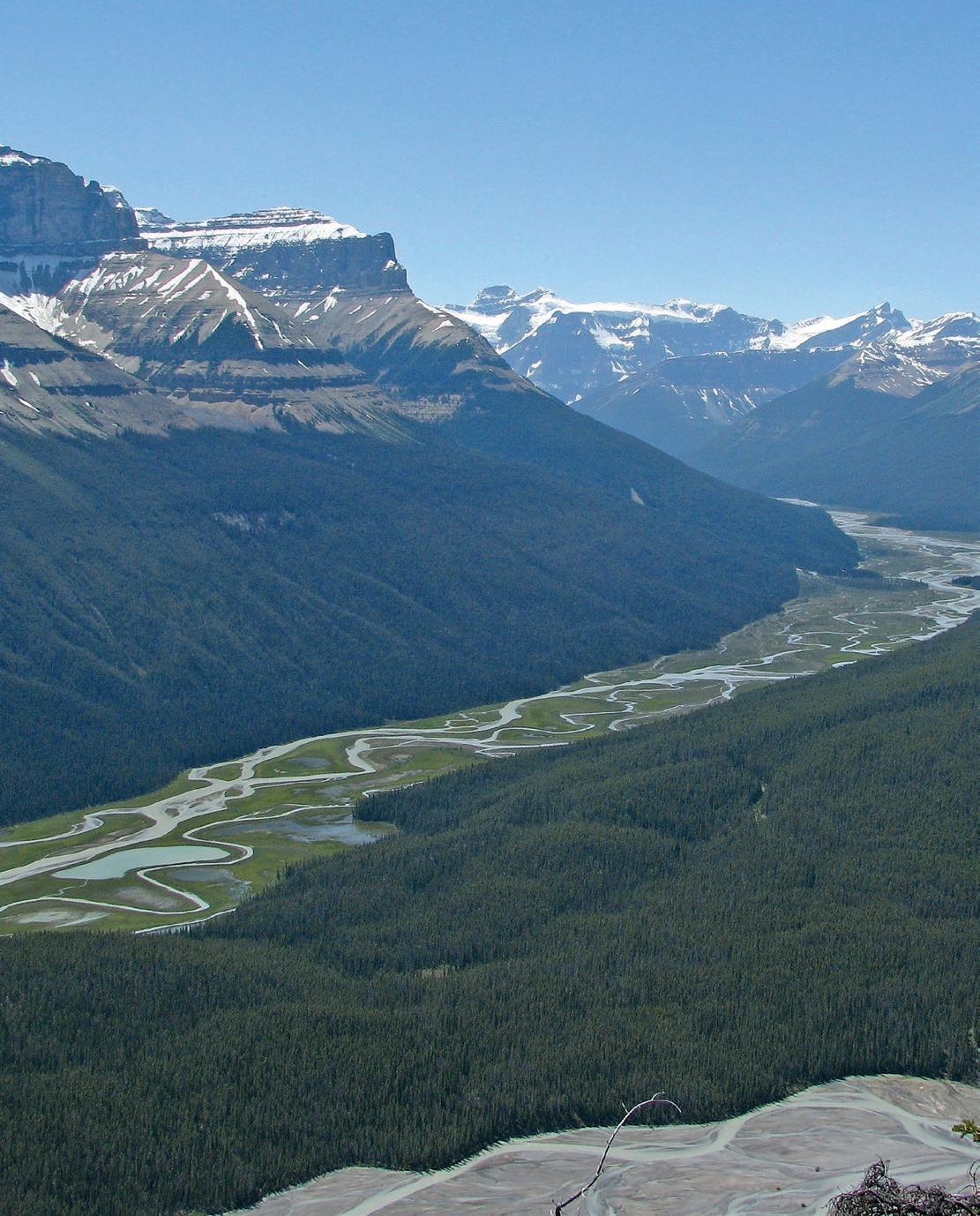
6 RESERVOIR ISSUE 01 • JANUARY 2015
Anastomosing channels of the Alexandra river in flood conditions. Icefields Parkway. Photo by: Ryan Simpson.
CORPORATE
SPONSORS
SAMARIUM
geoLOGIC systems ltd.
DIAMOND
Nexen ULC
AGAT Laboratories
The CSPG Educational Trust Fund
TITANIUM
Tourmaline Oil Corp.
ConocoPhillips Canada Limited
Cenovus Energy
Imperial Oil Resources
APEGA PLATINUM
Devon Canada Corporation
Suncor Energy
Canadian Natural Resources Ltd
Baker Hughes
IHS Global Canada Limited
Shell Canada Limited
GOLD
MEG Energy Corp.
Schlumberger Canada Limited
Cabra Consulting Inc.
Seitel Canada Ltd.
Husky Energy Inc.
SILVER
Qatar Shell GTL Limited
Regent Resources
Chinook Consulting
MJ Systems
Pengrowth Corporation
Arcis Seismic Solutions
CSEG
Halliburton
Emerson Process Management
Enerplus
EOG Resources Canada Inc.
BRONZE
SeisWare
Roke Technologies Ltd.
Pro Geo Consultants
Ikon Science Ltd.
Crescent Point Energy Trust
Geovariances
Golder Associates
Paradigm
McDaniel & Associates Consultants Ltd.
Talisman Energy
Geomodeling Technology Corp.
Pason System
Painted Pony Petroleum Ltd.
Earth Signal Processing Ltd
RPS Energy Canada Ltd.
Encana Corporation
GLJ Petroleum Consultants Ltd.
Japan Canada Oil Sands Ltd.
Sproule Associates Limited
Streamsim Technologies, Inc.
Tucker Energy Services Canada
Conference and Core Meltdown. In March 2016, the GeoConvention Partnership hosts its annual meeting. CSPG is also busy with SPE in September 2016 as we collaborate to present GeoScience meets Engineering.
CSPG Educational initiatives are doing very well, with short courses and field seminars throughout the year, including at GeoConvention, our Annual Professional Development Week in October, SIFT and the annual Student Field Trip in June. CSPG Luncheons and Technical Division Luncheons continue to deliver high-end, technical talks that are very well attended.
CSPG networking events – Squash, Classic Golf, Mixed Golf, 10 K Road Race, Energy Drivers, University Outreach Pub Night, the International Division Reception and the Young Professionals event – provide tremendous opportunities for CSPG Members to meet one another and socialize. I did not realize the value of these events until my Presidency in 2014 and I attended most of them. Hopefully we will see you at some of these events next year.
The CSPG Educational Trust Fund (ETF) continues to grow and continues to support petroleum geoscience education. The Trustees of the CSPG ETF will soon undertake a major fundraising initiative. Have you made a charitable donation to the CSPG ETF?
CSPG has a new video out called “What on Earth Does a Geologist Do?” It is receiving really good reviews. Check it out on the web site.
Our publications continue through a concerted effort to create thematic dedicated
ROCK SHOP
issues of the Bulletin of Canadian Petroleum Geology. Watch for them in the future.
In 2014, we modified some of the Director portfolios adding Directors of Affiliate Societies, Sponsorships (Corporate Relations), Publications, Young Professional Geoscientists and Marketing/Memberships.
Working with the 2014 CSPG Board of Directors was a lot of fun. What I found in my year as President is that they all have a passion. A passion for geology and for the Society that they each bring to CSPG in a slightly different way. Thank you Alexis Anastas, Astrid Arts, Tony Cadrin, Andrew Fox, Milovan Fustic, Mike LaBerge, and Ryan Lemiski, Paul MacKay, Bob Mummery, Weishan Ren, Darren Roblin and Gordon Stabb.
I trust that all members of the CSPG are aware of the new book on the geological history of Canada. Entitled “Four Billion Years and Counting: Canada’s Geological Heritage” and published by the Canadian Federation of Earth Sciences, the book is available at the CSPG office and elsewhere. This is an outstanding publication that was heavily subsidized by several organizations and companies.
Thank you to Lis Bjeld, CSPG Executive Director, and her staff – Biljana, Candace, Emma, Eric, Kasandra and Kelsey. They work behind the scenes for your Society.
In summary, you can be proud of your Society, the CSPG. We are strong and vibrant. It is because of members like you and our corporate sponsors that we are in such good shape. Continue to think of the CSPG as the place to come to as part of your professional career development and to network – your career home for life.

Geologists Inc. the Rock Solid Choice Wellsite Supervision Project Management Graphic Well Profiles Verticals / Horizontals EUB Sample / Core Studies Conventional / Un-conventional
1350, 734 - 7th Ave SW Calgary, AB T2P 3P8
B 403.234.7625, www.WellsiteGeologists.com C 403.660.9883, info@WellsiteGeologists.com
RESERVOIR ISSUE 01 • JANUARY 2015 7
As of
A Special Thanks to Geologic Systems Ltd., CSPG ’s Top Sponsor of the Month. (...Continued
December 3, 2014
from page 5)
Wellsite
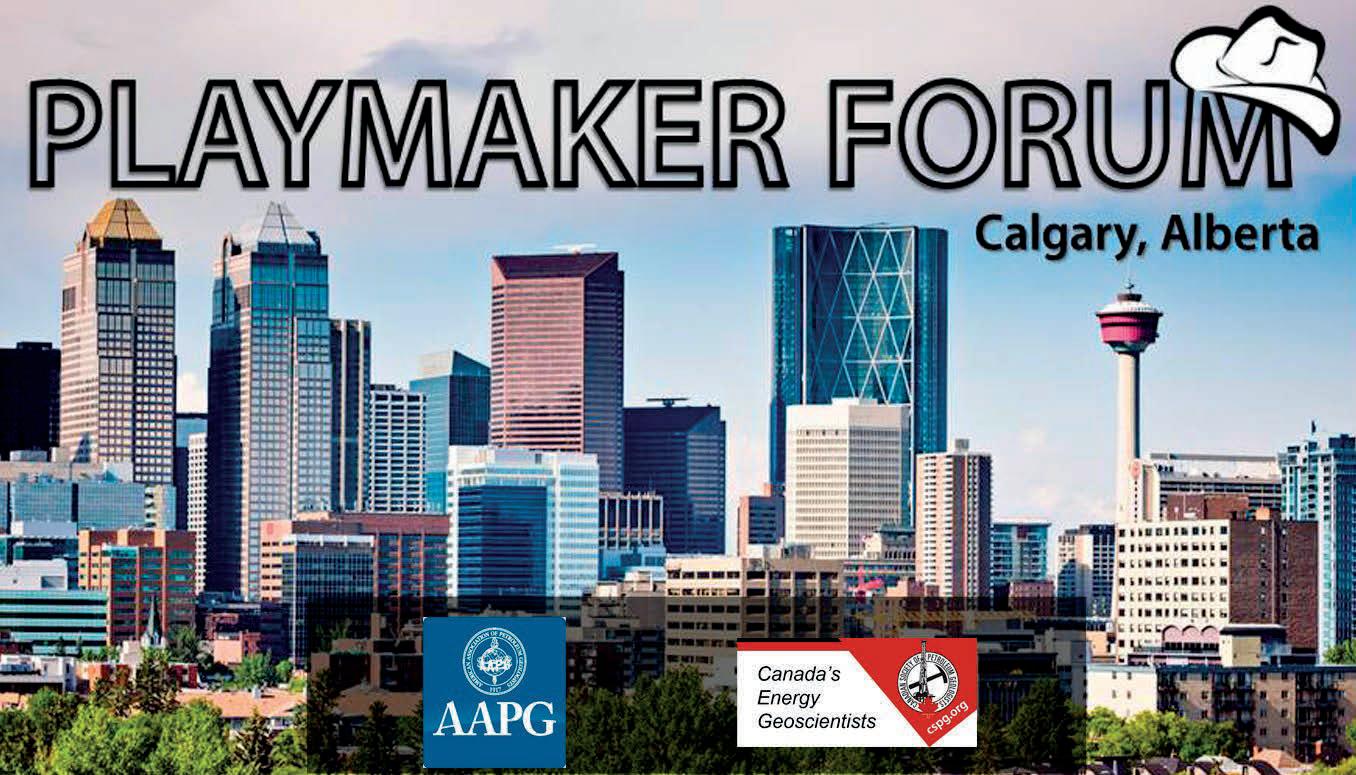
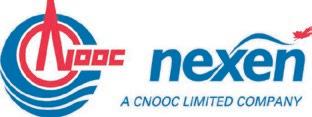




SPONSORED BY: Hyatt Regency Calgary Hyatt Regency Calgary March 31, 2015 March 31, 2015 2015 Produced by Geoscientists for Geoscientist's, the Playmaker Forum brings wellknown, successful and distinguished Canadian speakers together for a day of unparalleled discussion. Register now at www.cspg.org or by calling 403-513-1233 Speakers include: David Gardner Michael McDonough Lee Krystinik (AAPG Past-President) Dale Leckie (CSPG President ) Your ticket includes: Complimentary networking lunch at the Hyatt Regency White Hat Round-Up Reception; appetizers and refreshments will be served Join AAPG President-Elect John Hogg as the Playmaker Forum makes its Canadian debut! 2014
TECHNICAL LUNCHEONS JANUARY LUNCHEON
John Allan: The Founding of Alberta’s Energy Industries
SPEAKER
C. Willem Langenberg
Long Mountain Research Inc. University of Alberta
11:30 am
Thursday, January 8th, 2015
TELUS Convention Centre MacLeod Hall CD South Building Calgary, Alberta
Please note: The cut-off date for ticket sales is 1:00 pm, three business days before event. (Monday, Jan 5, 2015). CSPG Member Ticket Price: $45.00 + GST. Non-Member Ticket Price: $47.50 + GST.
Each CSPG Technical Luncheon is 1 APEGA PDH credit. Tickets may be purchased online at https://www.cspg.org/eSeries/source/ Events/index.cfm.
ABSTRACT
This talk is about the recently published book entitled: John Allan and the founding of Alberta’s energy industries. This book of photographs shows us the beginning of Alberta’s energy industries through the eyes of Dr. John Andrew Allan, first Chairman of the Department of Geology at the University of Alberta and first Director of the Alberta Geological Survey. John Allan played a founding role in the development of the mineral resources of Alberta. The pictures tell this story, which will be told again.
The views presented in the book follow John Allan’s fieldwork throughout the province and beyond. They show us what he and his contemporaries saw with their own eyes in times past. They document how he saw the development potential of Alberta’s mineral resources, as do his numerous reports and papers. In a talk on CKUA radio in 1927, he predicted the oil boom which began in 1947 with the discovery of the Leduc oil field. John Allan’s leadership and foresight greatly contributed to the success of the energy industries in Alberta, which changed the
fortunes of the Province of Alberta and its citizens.
John Andrew Allan was born in Aubrey, Quebec, in 1884. He studied at McGill University in Montreal and at the Massachusetts Institute of Technology in Boston, where he obtained his Ph.D. in geology in 1912. In this year, four years after the founding of the University of Alberta, Henry Marshall Tory appointed John Allan as the first Professor of Geology at the University. He developed courses in geology and founded the Departments of Geology and Mining Engineering. As Tory envisioned, this appointment helped to define and expand the role of geology in the development of Alberta’s natural resources.
In addition to his work as a Professor of the University of Alberta for thirtyseven years and Chairman of the Geology Department, John Allan was a founding member of the Scientific and Industrial Research Council of Alberta in 1921. He was Director of the Research Council’s Alberta Geological Survey from 1921 until his retirement in 1949. He was also a founding member of the Canadian Society of Petroleum Geologists (CSPG) in 1927 and the Association of Professional Engineers and Geoscientists of Alberta (APEGA) in 1920; and APEGA’s President in 1930. He continued consulting and advising until his death from heart failure in 1955.
BIOGRAPHY
Willem Langenberg is presently the principal researcher of Long Mountain Research Inc. and an Adjunct Professor at the University of Alberta. Before that, he worked for the Alberta Geological Survey for almost 35 years. He obtained a Ph.D. in structural geology from the University of Amsterdam in the Netherlands in 1972. He was previously employed by the University of Amsterdam, the University of Alberta, Alberta Research Council, Alberta Department of Energy and the Energy Resources Conservation Board.
He has had a longstanding career in structural geology, with emphasis during the last thirty years on economic geology (including energy and mineral resources). He performed the function of Project Control Officer on the intergovernmental Turtle Mountain Monitoring Project from 2003-2005. He is presently conducting investigations on the geology of Turtle Mountain (Crowsnest Pass), dating of
Webcasts sponsored by


Cretaceous and Tertiary bentonites, Coalbed methane (CBM) and CO2 Capture and Storage (CCS). He authored or co-authored 35 refereed articles in scientific journals, 4 AGS Bulletins and many AGS reports/maps.
He is a member of APEGA, the Geological Association of Canada, the Canadian Society of Petroleum Geology and the Geological Society of America. He was Publication Manager of the Edmonton Geological Society from 1993-2003.
RESERVOIR ISSUE 01 • JANUARY 2015 9
TECHNICAL LUNCHEONS JANUARY LUNCHEON
Anatomy of a Petroleum Source Rock
SPEAKER
Barry Jay Katz
11:30 am Tuesday, January 27th, 2015
TELUS Convention MacLeod Hall CD South Building Calgary, Alberta
Please note: The cut-off date for ticket sales is 1:00 pm, three business days before event. (Thursday, Jan 22, 2015). CSPG Member Ticket Price: $45.00 + GST. Non-Member Ticket Price: $47.50 + GST.
Each CSPG Technical Luncheon is 1 APEGA PDH credit. Tickets may be purchased online at https://www.cspg.org/eSeries/source/Events/ index.cfm.
ABSTRACT
With the growing global attention in shale gas and shale oil plays there has been a renewed interest in source rock geochemistry. This has resulted in a number of key questions concerning source characterization, including:
1) how much internal variability might be anticipated;
2) what is the potential impact of the variability on resource assessment; and 3) how best may a source be sampled to “fully” understand its variability?
These questions were examined, in part, through the detailed sampling of the Kimmeridge Clay at the type locality. A representation of variability was obtained from basic source rock data collected on fresh outcrop samples. Total organic carbon contents, for this world-class source rock, varied between 0.88 and 21.35 wt.%, with a mean of 9.13 wt.%. Samples with greater than 1.0 wt.% TOC had total pyrolysis yields ranging between 6.31 and 126.65 mg HC/g rock, with a mean of 54.16 mg HC/g rock. Hydrogen index
Webcasts sponsored by

values ranged from 240 to 611 mg HC/g TOC, with a mean of 516 mg HC/g TOC.
Even these ranges do not fully capture the variability of the source, if data from elsewhere in the North Sea region are included. For example, TOC values exceeding 40 wt% have been measured. Although the hydrogen index values suggested similar liquid hydrocarbon products at Kimmeridge Bay across the outcrop the variability across the North Sea suggests that there are regions that are more gas-prone character. The differences in organic carbon content and hydrocarbon yields, which range by more than an order of magnitude, would have direct impact on estimates of both conventional and unconventional resources, if assessments were based on individual discrete samples.
Discrete sampling either from an outcrop or a core commonly results in bias. Historically, these biases have been skewed toward the more organically enriched samples. This can be overcome through an increase in the number of samples and the

GeoConvention 2015

GeoConvention is a geoscience-focused annual convention with over 4000 delegates and 100 exhibitors. The theme this year is Geoscience: New Horizons. Please join us as an exhibitor, sponsor or attendee to learn from, and network with a premier community of geoscientists.



Abstract Deadline January 9, 2015
Submission information at www.geoconvention.com/conference/call-for-abstracts
GeoConvention 2015: New Horizons is taking place May 4-8, 2015. Our technical program and exhibition floor are at the TELUS Convention Centre from May 4-6 with the Core Conference being held May 7-8 at the Core Research Centre.
The deadline for your poster, oral or core conference contribution is days away, please visit geoconvention.com/conference/call-for-abstracts for more information and to get your paper in!
Sponsorship opportunities are also available - contact Elwin Reichert at sponsorship@geoconvention.com to ensure that you get sponsorship opportunity you want.
As well, our exhibit floor is nearly full - contact Vic Urban at exhibits@geoconvention.com to reserve your spot!
10 RESERVOIR ISSUE 01 • JANUARY 2015
www.geoconvention.com
incorporation of lithologic information, so that weighted averages can be generated to obtain a better representation of the unit. The analysis of cuttings samples introduces a different suite of problems, associated with representativeness and positioning. Regional variation also needs to be incorporated through an examination of the depositional systems of the unit, ensuring that the key environments are sampled accounting for the impact of factors such as sedimentary dilution, influence of storms, and oxygen content of the water column.
BIOGRAPHY
Barry Katz is a Chevron Fellow and team leader for hydrocarbon charge in Chevron’s Energy Technology Company. He received his B.S. in geology from Brooklyn College in 1974 and his Ph.D. from the University of Miami in 1979 in marine geology and geophysics.
After receiving his doctorate, Barry joined Texaco’s Bellaire Research Center where he held numerous technical and supervisory positions. He continued with Chevron after the merger in 2001, where he has been part of Chevron’s Energy Technology Company. His work has focused on petroleum systems,
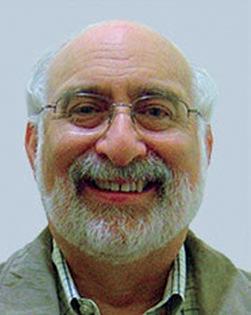
lacustrine basins and the applications of geochemistry to petroleum exploration and development. He has been engaged in both research and technical support activities and has worked in approximately 50 basins on six continents.
Barry has authored more than 75 peerreviewed papers and has edited five books. He serves on the editorial boards of four journals, including the AAPG Bulletin as Senior Associate Editor and as Editor-in-Chief of The Open Geology Journal. He has been chairman of IODP’s Environmental Protection and Safety Panel for the past decade and
serves on the AAPG Research Committee. His honors include being named a Chevron Fellow, Honorary AAPG Member, recipient of AAPG’s Robert H. Dott, Sr. Memorial Award, AAPG’s Distinguished Service Award, and Nigerian Association of Petroleum Explorations’ Best Presentation Award. He served as Elected Editor for the Houston Geological Society and as President of HGS.
He continues to pursue his interests in a broad range of geochemical topics including:
• Source rock variability and its implications on exploration risk and resource assessment
• Lacustrine basins: their unique characteristics and implications on exploration and production
• Geochemical aspects of unconventional petroleum systems
• Unique characteristics of pre-Devonian petroleum systems

2015 Membership Renewals
RESERVOIR ISSUE 01 • JANUARY 2015 11
Does your membership expire December 31? If so, you should have already received a renewal no�ce via email. Renew your membership online now! 1. Click Sign In at the top of www.cspg.org 2. Login = your member number; Password = rst four le�ers of your last name plus your member number (all lowercase, no spaces) 3. Click your name at the top of the screen 4. Click Renew Now on the le� of the screen 5. Make an op�onal dona�on to the CSPG Educa�onal Trust Fund
DIVISION TALKS INTERNATIONAL DIVISION
Adventures in Frontier Exploration
SPEAKER
Rachel Newrick, Ph.D., P.Geoph., P.Geol. Racian Ventures
12:00pm, Noon
Wednesday, January 14th, 2015
Nexen Plus 15 Conference Centre
Nexen Annex Building 7th Avenue and 7th Street SE Calgary, Alberta
ABSTRACT
Sponsored by
Adventures in Frontier Exploration

CSPG International Division Talk 14 January, 2015
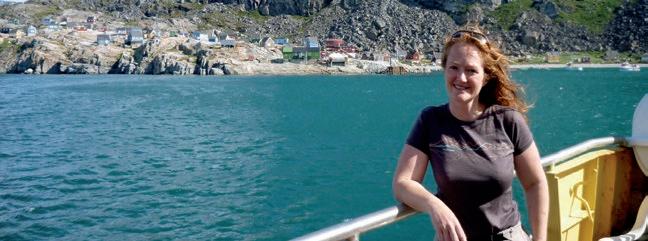
Frontier exploration is challenging. Data are often sparse, the petroleum system unproven, the costs large, and the time frame long. But the excitement of drilling wildcat wells to test concepts, prove a hydrocarbon province, and ultimately discover hydrocarbons in new regions is incredible. From the field to drillingcome and hear a tale of West Greenland exploration.
BIOGRAPHY
Rachel Newrick obtained her BSc (Geology, 1992) and BSc Honours (Applied Geophysics, 1993) at Victoria University of Wellington, New Zealand and her PhD (Exploration Seismology, 2004) at the University of Calgary, Canada. Since 1992 she has worked for BHP Petroleum in Melbourne, Occidental Petroleum in Houston, Exxon Mobil in Houston, Veritas DGC in Calgary, Nexen Energy ULC in Calgary, Nexen Petroleum UK in London and Cairn Energy in Edinburgh. While at Cairn Energy, Rachel participated in the frontier exploration of West Greenland
Newrick PhD., P.Geoph., P.Geol Racian Ventures
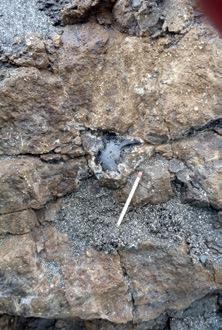
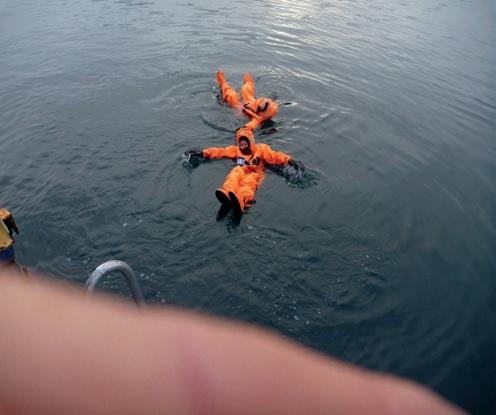


before taking on the role of Exploration Manager for the Mediterranean and North Africa. On returning to Canada in 2013, to get back to the great outdoors, Rachel founded Racian Ventures and acts as Consultant Geophysicist to international exploration companies and recently began teaching ‘Introduction to Seismic Interpretation’ with Nautilus.
Rachel is the co-author of the SEG Geophysical Monograph Series #13, ‘Fundamentals of Geophysical Interpretation’ with Laurence Lines, a contributor to ‘52 Things You Should Know About Geophysics’, and has presented at a variety of conferences and technical
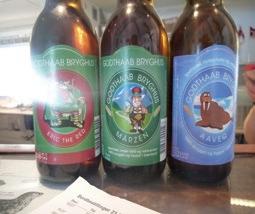
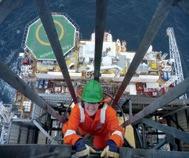
luncheons. She was awarded Best Student Paper at GeoCanada2000 and along with co-author Paul Anderson was awarded 2008 CSEG RECORDER Best Paper for ‘Strange but True Stories of Synthetic Seismograms’.
Rachel is a member of the CSEG, SEG, CSPG, AAPG, EAGE, APEGA (P.Geoph, P.Geol) and is the CSEG Vice President [President Elect] (2014-2015). She currently writes ‘Volunteer Spotlight’, a column for the CSEG RECORDER.
While not working or volunteering in the geoscience community, Rachel is travelling, motorcycling, skiing or enjoying fine wine with her partner Ian. They are based in Calgary, Canada but spend a lot of time in Bellevue, Crowsnest Pass.

12 RESERVOIR ISSUE 01 • JANUARY 2015
Rachel
DIVISION TALKS PALAEONTOLOGY DIVISION
An Overview of the Marine Reptile Group
Plesiosauria, and an Introduction to Deducing
the Flexibility of their
Neck
SPEAKER
Ramon Nagesan, M. Sc. Candidate University of Calgary
7:30 PM, Friday, January 16, 2015 Mount Royal University, Room B108 Calgary, Alberta
ABSTRACT
Plesiosauria are a monophyletic group of Mesozoic marine reptiles that have been found on every continent, and are known from many fossil localities here in Alberta. The group first appeared toward the end of the Triassic Period and persisted until the end of the Cretaceous Period. Within Plesiosauria (=Plesiosaurs) there are several taxonomic divisions, the most major of which is the split between the two primary morphotypes: Plesiosauridae and Pliosauridae. The Plesiosauridae traditionally include the taxa that exhibit a long neck and small skull, while Pliosauridae possess generally shorter necks and larger skulls. The range of body plans within Plesiosauria (Plesiosauridae + Pliosauridae) could indicate that this group was both evolutionarily complex, and ecologically diverse. One of the most striking features of these animals is their elongate neck, which would have played a role in aspects of their lifestyle such as feeding, and swimming abilities. Since Plesiosaurs were obligate marine reptiles they would have had to deal with a range of forces different from that of terrestrial animals, and how the neck functioned in these conditions is an understudied topic area. To better understand the function of the elongate neck and its effect the lifestyle of Plesiosaurs, it is useful to understand morphology and make functional interpretations. An introduction to a functional morphology study of Nichollossaura borealis (TMP 1994.122.01) is presented here. N. borealis was collected in 1994 from rocks dating to approximately 113 million years ago in the Clearwater Formation near Fort
McMurray, Alberta. The aim of this study is to quantify and understand the flexibility in the neck of this Plesiosaur specimen, and develop methods that can be applied to other Plesiosaurs. Using N. borealis, 3D renderings have been constructed from CT data of the cervical vertebral column; this will be used to build a functional biomechanical model. Using this model a greater understanding of Plesiosaur lifestyle and ecology may be inferred, to better understand this diverse and interesting group of animals.
BIOGRAPHY
Ramon Nagesan is a M.Sc. student at the University of Calgary, currently finishing the first year of his masters under the supervision of Dr. Jason S. Anderson. Ramon was born in Sri Lanka and moved to Toronto, where he grew up visiting the Royal Ontario Museum as much as possible. Ramon has always been fascinated by the world around him: as a small child he collected lizards and rocks to figure out whatever he could. Attending the University of Toronto for his H.B.Sc he concentrated on Biology, Geology, and Palaeontology, working with Dr. Robert Reisz on tooth wear in the Permian reptile Captorhinus augti. Ramon has conducted fieldwork in many locations including: Northern Ontario, the South
Sponsored by
Western United States, and all across Alberta. Following the completion of his undergraduate degree he immediately began work as a Field and Lab Technician at the Royal Tyrrell Museum. While at the RTMP he worked on a Plesiosaur specimen from Fort McMurray, the Olds College Champsosaur (which is now on display), and a variety of Dinosaur material from Alberta. Notable field projects here in Alberta have included: The Milk River Daspletosaurus (“Mr. Daspleto”), three summers in Dinosaur Provincial Park, Olds College Champsosaur, Okotoks Gar Block, the Red Deer River Arrhinoceratops bone bed, and the Scabby Butte bone bed. Ramon wishes to have a fulfilling career involved with palaeontology into the future.
INFORMATION
This event is presented jointly by the Alberta Palaeontological Society, the Earth Science Department of Mount Royal University, and the Palaeontology Division of the Canadian Society of Petroleum Geologists. For details or to present a talk in the future, please contact CSPG Palaeontology Division Chair Jon Noad at jonnoad@hotmail.com or APS Coordinator Harold Whittaker at 403286-0349 or contact programs1@albertapaleo. org. Visit the APS website for confirmation of event times and upcoming speakers: http://www. albertapaleo.org/.
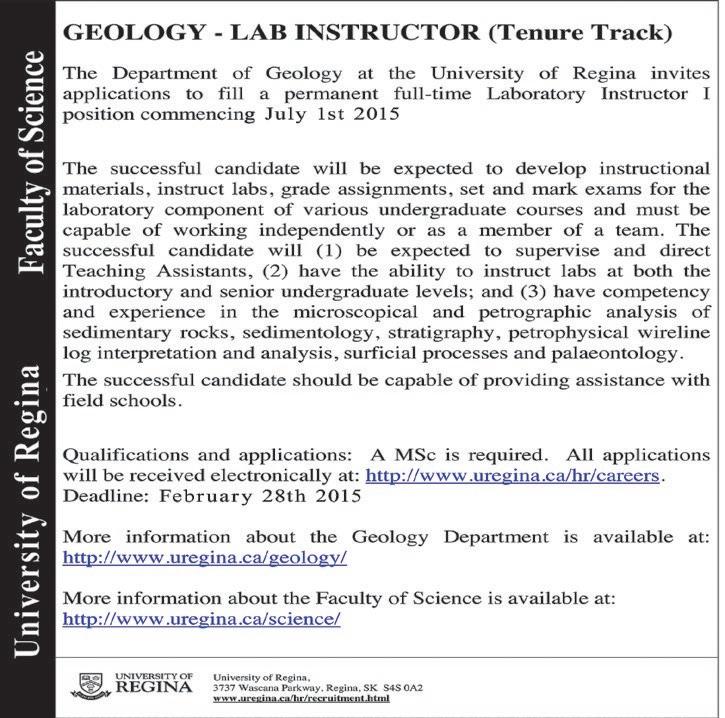
RESERVOIR ISSUE 01 • JANUARY 2015 13
CSPG CORE CONFERENCE
| By Rachael Acker and Adam Pugh, CSPG 2015 Core Conference Co-Chairs

Rocks are always at the root of our professions, forming the foundation of any good geological or geophysical interpretation. Core provides that unique opportunity to peer into the subsurface and relate our ideas to real data, which can be used for developing insights into potential or established oil and gas targets.
Integration of core data with various disciplines, such as petrophysics, geophysics and geology improves our understanding of the rocks and creates exciting topics of discussion amongst geoscientists. It’s a rare occasion when a geoscientist isn’t spurred into conversation after observing a core or outcrop section.
The CSPG Core Conference at the 2015 GeoConvention provides the annual opportunity to spark those engaging geoscience discussions, surrounded by a wide variety of cores from across Alberta, Canada and the world.
Following with the New Horizons theme of GeoConvention 2015, presenters from academia and industry will display new fields, new ideas and new technologies. Abstract submission is now open, closing on January 9th, 2015.
The CSPG core conference wouldn’t be complete without BBQ lunches provided by Weatherford, coffee and snacks provided by Core Lab and the well-attended AGAT sponsored Core Meltdown, which wraps up the week with a great chance to mingle and unwind with your fellow geoscientists.

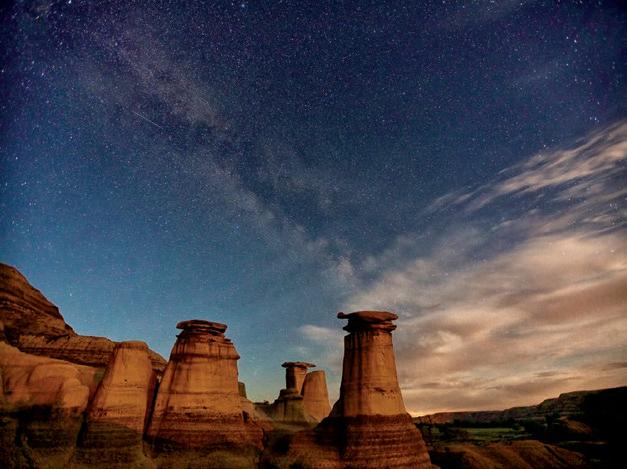
14 RESERVOIR ISSUE 01 • JANUARY 2015
2015 Geological
2015 CSPG Geological Calendar Additional Copies available for 10 dollars! Online: www.cspg.org Office: 110 - 333, 5th Ave SW
Calendar
EXPLORING BELOW THE SALT In Angola and Beyond
| By Tako Koning, Senior Petroleum Geologist, Luanda, Angola
ANGOLA’S PETROLEUM HERITAGE
Angola’s very first oil-event dates back to the late 1700’s when the Portuguese colonialists discovered oil seeps and asphalt deposits at Libongos near Caxito, 50 km northeast of Angola’s capital city of Luanda and shipped some of the asphalt to Lisbon and Rio de Janeiro to be used as caulking material to prevent leakage in the hulls of their ships.
Then, almost a century ago, in 1915 the Portuguese oil company Companhia de Pesquisias Mineras de Angola (PEMA) carried out the first-ever drilling in Angola in the Dande River valley near the village of Barra do Dande in Bengo Province, some 40 km north of Luanda. The first well, Dande-1 was drilled to a depth of 602 m and was plugged and abandoned. PEMA drilled a total of 7 wells in the Dande River area of which all were abandoned. However, Dande-4 drilled in 1916 to a depth of 857 m was tested and flowed at 6 bo/d (barrels of oil per day), representing the first-ever flow of oil in Angola. Sporadic exploration drilling for the next 40 years was unsuccessful.
A key milestone occurred in 1955 when the onshore Benfica oil field was discovered just south of Luanda. The discovery, Benfica-1 was drilled by the Belgium-based oil company, Petrofina (Fina). Oil production began in 1956. Thus 41 years had passed from the first drilling for oil in1915 by PEMA and the commencement of oil production in Angola. The oil was pumped through a small diameter pipeline to a refinery built and operated by Fina in Luanda.
In 1968 Cabinda Gulf Oil Company (CABGOC), the subsidiary of Pittsburgh, Pennsylvania-based Gulf Oil made Angola’s first offshore discovery: the Malongo field resulting in Angola’s first offshore production commencing in 1969.
By 1996 Angola was producing about 700,000 bo/d when a truly seminal event occurred: the discovery of the Girassol field in Block 17 by the French oil company, Elf Petroleum in 1,300 m of water, 140 km off the coast of Angola.
The Girassol discovery stunned the industry, since finding oil so far offshore
SOUTH
AMERICA
AFRICA
and in a new geological formation was totally unexpected. Additional drilling by Elf proved Girassol to be a giant-sized find with the oil bearing reservoir located in turbidite sandstones and conglomerates of Oligocene age.
This led to many more such discoveries in the Oligocene and Miocene sediments in the deep waters of Angola including by Chevron in Block 14, Esso in Block 15, Total in Blocks 17 & 32, BP in Blocks 18 & 31, the state oil company Sonangol in Block 4/05, ENI in Block 15/06 and Maersk Oil in Block 16.
The success of Girassol and the follow-up oil discoveries led to a burst in Angola’s oil production with the country’s oil production reaching almost 2.0 million
barrels of oil per day in 2008. Today, around 75 per cent of Angola’s production of approximately 1.75 million bo/d is from the Oligocene and Miocene-age reservoirs.
THE PRE-SALT OF BRAZIL –IMPLICATIONS FOR ANGOLA
In 2006 another milestone event happened across the Atlantic Ocean in Brazil which held great significance for Angola: the discovery of the Lula oilfield in the offshore Santos Basin. This field was originally called Tupi but was renamed Lula after Brazilian President Luiz Inacio Lula da Silva.
But why would a discovery in far away Brazil have significance for Angola? Geologists have known for many years, on the basis of extensive paleontological research, outcrop
(Continued on page 16 ...)
RESERVOIR ISSUE 01 • JANUARY 2015 15
RECIFE SERGIPE RECONCAVOBHIASULALMADACAMPOS SANTOS
GABON DOUALARIOMUNI
PELOTAS SALADO COLORADO ORANGE WALVIS NAMIBE BENGUELACONGOKWANZA
SALT BASIN
and seismic information, that in Early Cretaceous time (135 million years ago), Angola and Brazil were part of Pangea –literally “joined at the hip” – so the geology of both was assumed to be identical.
About 125-130 million years ago South America began to separate from Africa and as the continents drifted apart, an extensive rift valley was formed, containing large lakes with abundant organic material that had washed off the adjacent highlands. In Angola, these sediments are known as the Bucomazi formation, an exceedingly rich oil and gas source rock. The rift valleys are similar to the present-day East Africa rift system.
As Africa and South America continued to move apart the sea transgressed into the rift system. Since the area invaded by the sea was still long and narrow, from timeto-time the sea was cut off by adjacent land masses and the water evaporated, leaving behind ever deepening deposits of salt. Further continental separation resulted in the laying down of more thick deposits of marine sediments.
Fast-forward 130 million years, and Brazil is now 7,000 km west of Angola. Nonetheless, the discovery of the Lula oilfield in Brazil was truly a milestone event for Angola.

Petroleum geologists quickly recognized the implication that the Santos Basin deposits could be duplicated in the Kwanza and Namibe Basins, to which they were once juxtaposed. So immediately after the discovery of the Tupi field, geologists, on the other side of the Atlantic Ocean were searching through any available geological and geophysical data for Tupi look-alikes.
The well which found the Lula field was Tupi-1. It was drilled by Petrobras in the deepwater part of the Santos Basin – in water depths of 2,100 m, with the well drilled a further 5,200 m below the sea floor. The Lula field is in a high pressured, high temperature environment beneath a massive, 2 km thick salt sheet. The cost of Tupi-1 was a staggering $240 million, but the reward was finding a mega-giant oil field and the opening up of the pre-salt oil play in Brazil.
Accordingly, Lula was the first of the now famous pre-salt oil fields in Brazil, proving that a working petroleum system exists beneath the salt layer of the Santos Basin. The oil source rocks are the organically rich lake shales, the reservoirs are porous microbalitic limestones and dolomites, and the seal above the reservoirs is the thick, impervious salt layer.
According to Petrobras, the field has recoverable reserves of 5.3 billion barrels oil
and 6.9 trillion cubic feet of gas. Petrobras (65% working interest) operates the field on behalf of partners BG Group (25%) and Galp Energia (10%). Two FPSOs (Floating Production Storage & Offloading), Lula pilot and Lula NE, are currently producing the Lula field. The wells in Lula are averaging production of 25,000 bo/d per well.
An oil field even larger than Lula was discovered in the Santos Basin in 2010. Petrobras, on behalf of the Brazilian regulator Agencia Nacional do Petroleo (ANP) discovered Libra in 2,000 m of water. The discovery well intersected a continuous oil column of 325 m in carbonate rocks below the salt. Test results indicated good quality light oil with 27 degree API. In October, 2013 a consortium of Petrobras (40%), Shell (20%), Total (20%), CNPC (10%) and CNOOC (10%) was awarded a 35year production sharing contract to develop Libra. The consortium agreed to pay to Brazil’s government a signature bonus of $6.7 billion for the field rights. Shell has described the field as one of the largest deepwater oil accumulations in the world. According to ANP, Libra has the potential of 8 to 12 billion barrels of recoverable oil resources. Libra’s total gross peak oil production could reach 1.4 million bo/d, according to ANP.
Since the discovery of Lula, many more presalt oil and gas fields including Libra have

BRAZIL ANGOLA


SPREADING CENTER





16 RESERVOIR ISSUE 01 • JANUARY 2015
POST-SALT MARINE SHALES IMPERVIOUS SALT LAYER UP TO 2 KM THICK POROUS LAKE SANDSTONES POROUS LIMESTONES & DOLOMITES PRE-CAMBRIAN GRANITES AND VOLCANICS HIGHLY ORGANIC OIL GENERATING LAKE SHALES
OIL FIELDS OIL Project1_Layout 1 12/22/12 3:42 PM Page 1 (...Continued from page 15)
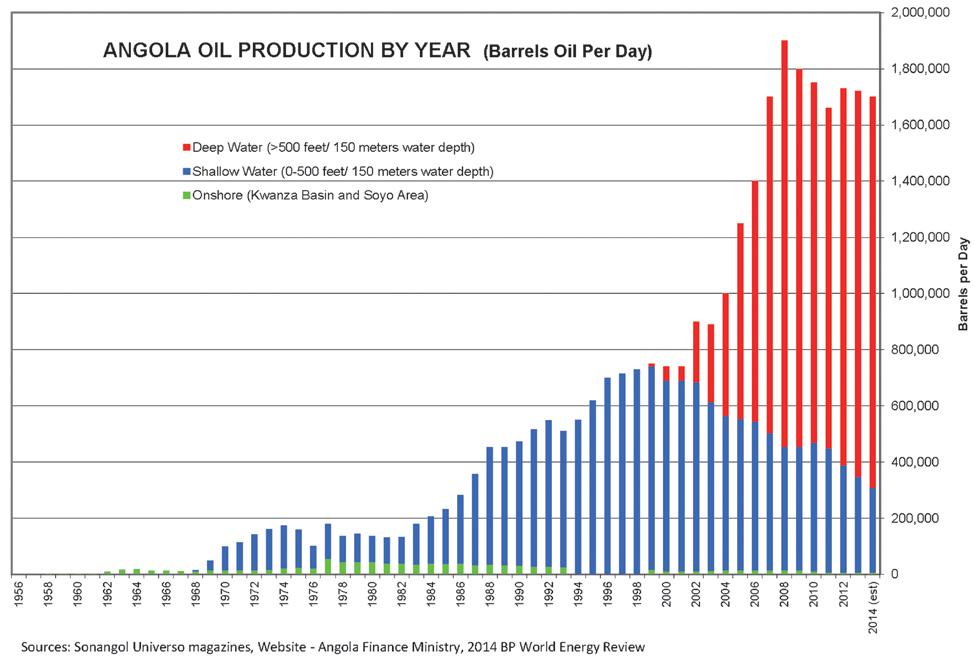
been found in the Santos Basin as well as in the more northern Campos Basin, and oil industry analysts such as Wood Mackenzie and IHS have estimated that Brazil’s pre-salt reserves could amount to some 20 – 30 billion barrels of recoverable oil, while ANP has stated that that the reserves could be as much as 50 billion barrels.
The impact of the pre-salt discoveries on Brazil has been dramatic: Brazil’s oil production is now 2.1 million bo/d of which 640,000 bo/d is from the pre-salt fields. Approximately 50% of the pre-salt production is from the Santos Basin and the other 50% is from the Campos Basin. The oil production is coming from only 31 wells which is equivalent to 21,000 bo/d per well. Petrobras believes that output from these reserves will grow and bring Brazil’s overall output to about 4 million bo/d – nearly double the country’s current production.
From an economic view point, the presalt production is extremely important for Brazil. The production from Brazil’s mature post-salt fields has been declining rapidly. Brazil is approximately oil neutral meaning that its oil consumption is met by its oil production. But had the pre-salt fields not been discovered, then Brazil would have needed to begin importing significant volumes of oil which would have had a serious impact on Brazil’s economy.
ANGOLA’S RECENT PRE-SALT SUCCESSES
For petroleum explorers, the deepwater Kwanza Basin has become one of the most exciting basins in the world. A historic event occurred in 2011 with the awarding of 11 pre-salt blocks by Sonangol to BP, Cobalt International, ENI, Total, Repsol, ConocoPhillips, and Statoil.
In 2011, the Danish oil company, Maersk Oil had already embarked on drilling in deepwater Kwanza Basin Block 23 and in early 2012 announced the results of its first well, Azul-1 drilled specifically to evaluate a pre-salt prospect. The well was drilled in a water depth of 902 m to a depth of 5,330 m. Azul-1 was tested at 3,000 bo/d. In the history of Angola’s oil industry, this well is historic since it was the first-ever deep water well drilled in the Kwanza Basin which flowed oil from the pre-salt.
The announcement of the Azul-1 oil discovery was shortly followed up by the announcement by Houston, Texas-based Cobalt International Exploration of the success of its first well drilled in Block 21 in the Kwanza Basin, Cameia-1 which tested high quality oil from the pre-salt. Cameia-1 was drilled in a water depth of 1,680 m. An extended DST (drill stem test) was performed on Cameia-1 which flowed at a sustained rate of 5,010 bo/d of 44
degrees API oil and 14.3 million cubic feet of associated gas per day thus approximately a total of 7,400 barrels of oil-equivalent per day. Cobalt reported that the well confirmed the presence of 360 m of gross continuous oil column with over 75% net-to-gross. No gas-oil nor oil-water was evident on the wireline logs. Cobalt stated that it believed that the well has the potential to produce in excess of 20,000 bo/d.
Approximately one year later, Cobalt announced another important pre-salt discovery which was the Lontra-1 well drilled in Block 20. This well was drilled to a total depth of 4,195 m and penetrated 75 m of high quality reservoir section. The well produced at a stabilized flow rate of 2,500 barrels per day of condensate and 39.0 million cubic feet of gas per day. According to Cobalt, the flow rates were significantly restricted by the surface test facilities on the drilling rig.
An additional very encouraging well was drilled by Cobalt in the first half of 2014. The Orca-1 well was drilled in Block 20 to a depth of 3,872 m and intersected 76 m of pay in a section which Cobalt described as having excellent reservoir quality. Orca-1 flowed at a facility-constrained rate of 3,700 bo/d and 16.3 million cubic feet of gas per day with minimal drawdown. Cobalt has (Continued on page 18 ...)
RESERVOIR ISSUE 01 • JANUARY 2015 17
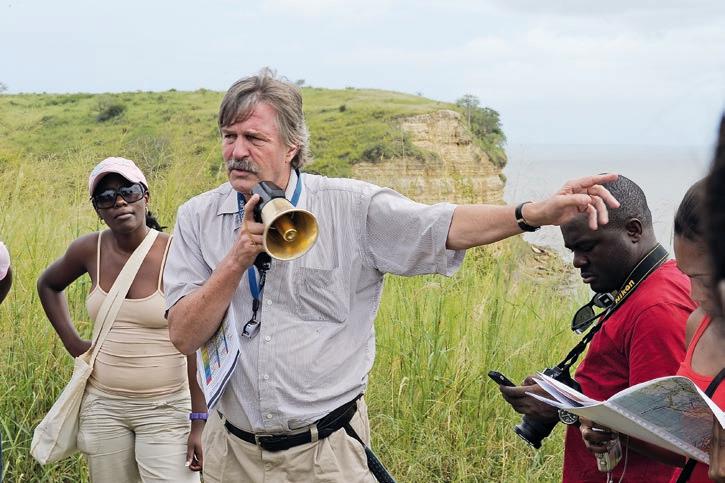
(...Continued from page 17)
a 40% working interest in Block 20 and is partnered by Sonangol and BP, each with 30% working interests.
However, as with any oil exploration play worldwide, there have also been some failures. ConocoPhillips reported a dry hole on the western edge of the pre-salt play and most recently Statoil reported two dry holes. Also, Petrobras drilled the Ogonga-1 well which encountered gas that proved to be entirely CO2.
THE PRE-SALT BEYOND ANGOLA
The discovery of the Tupi oil field in Brazil’s Santos Basin also led the international oil explorers to look along the entire West Africa margin.
Exploration wells focused on extending the pre-salt oil play southwards from Angola have been drilled offshore Namibia but without success. These wells, all dry holes, were drilled in the last two years by BP, Petrobras, Repsol and the Brazilian company - HRT Oil & Gas. Oil industry analysts have reported that no salt has been encountered in any wells drilled offshore Namibia and likely that pre-salt oil-generating source rocks are not present in Namibia.
However, exploration in the pre-salt northwards of Angola exploration has met with encouragement beginning in Gabon. In 2012, Total announced that the Diaman1B well, the first well to explore in the pre-salt of deepwater Gabon, encountered up to 55 m of gas and condensate pay in pre-salt sandstones thus confirming the existence of a working petroleum system
in the pre-salt in deepwater Gabon. The water depth of Diaman-1 was 1,730 m and the drill depth was 5,585 m. Partners in the well included Cobalt and Marathon Oil.
In 2012, in Congo Brazzaville the Italian oil company ENI encountered success in the Nene Marine-1 pre-salt oil discovery. The well was drilled in the shallow waters 17 km off the Congo Brazzaville coastline in a water depth of 24 m. The reservoir is not pre-salt microbalite carbonates similar to the presalt oil discoveries of Brazil and Angola but rather is pre-salt sandstones. The discovery was tested at 5,000 bo/d of 36 degrees API oil. A third well, Nene Marine-3 drilled 2 km westwards from the discovery well confirmed the hydrocarbons and reservoir continuity. ENI estimates the in-place resources at 1.2 billion barrels of oil and about 1.0 trillion cubic feet of gas. In February, 2014 ENI’s upstream chief operating officer, Claudio Descalzi told analysts that the Nene Marine discovery had “cracked the pre-salt code in Congo-Brazzaville” and that further potential will be sought by ENI in a dedicated 2014 exploration program.
Thereafter ENI announced in July, 2014 a significant new pre-salt gas and condensate discovery in the shallow waters of Gabon. ENI revealed that the Nyonie Deep-1 well was located in 28 m of water about 13 km off the coast of Gabon and was drilled to a depth of 4,314 m. The well intersected a 320 m thick hydrocarbon bearing section in a pre-salt clastic sequence of Aptian age (110 million years old). According to ENI, the initial potential in-place resources are 500 million barrels of oil-equivalent.
Lastly, in October, 2014 Shell announced
a frontier exploration discovery offshore Gabon. The Leopard-1 well was drilled 145 km off the coast of Gabon in 2,100 m water depth and was drilled to a total depth of 5,063 m. The well encountered a gas column with approximately 200 m of net gas pay in a pre-salt reservoir. Shell has a 75% interest in the discovery and CNOOC is a partner in the well with 25%.
The recent pre-salt discoveries in Gabon and Congo Brazzaville are encouraging. However, the reservoirs are sandstones so these discoveries are not fully geologically equivalent to the microbalite carbonate reservoirs which are so prolific in Brazil and which have been discovered in Angola.
THE FUTURE
As the oil industry keenly watches the success or failure of more drilling in West Africa, everyone is questioning if the success of Brazil’s pre-salt oil play will truly be duplicated in West Africa. At this time, it is entirely speculative. More exploration wells are needed. In about two more years time, our knowledge of West Africa’s presalt will be much clearer.
Angola and Brazil have a common cultural heritage due to both countries were colonized by Portugal. Portuguese is the national language of both countries. Will the cultural commonality also extend to a commonality in the pre-salt oil and gas reservoirs? In the case of Angola, more drilling will provide answers to such questions.
ABOUT THE AUTHOR
Holland-born Canada-raised Tako Koning graduated with a B.Sc. in Geology from the University of Alberta and a B.A. in Economics from the University of Calgary. He joined the oil industry in 1971 and has 43 years of experience which includes 27 years overseas in Indonesia, Nigeria and Angola. He has been a life-time member of the CSPG. He lives in Luanda, Angola and is currently consulting for Gaffney Cline & Associates. In Luanda he is an active member of the boards of directors of the AAPG, SPE, and SPWLA. He also leads geological field trips north of Luanda for oil industry professionals, university students and the public-at-large to study Cretaceous sedimentary rocks and robust seepages of pre-salt oil which occur along the eastern margins of the Kwanza Basin.
18 RESERVOIR ISSUE 01 • JANUARY 2015
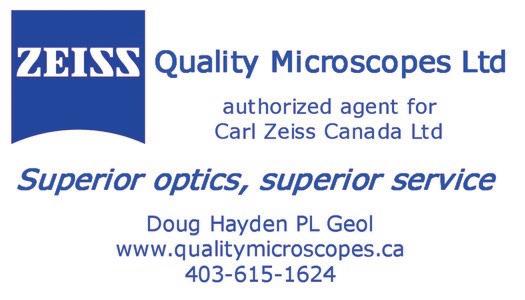
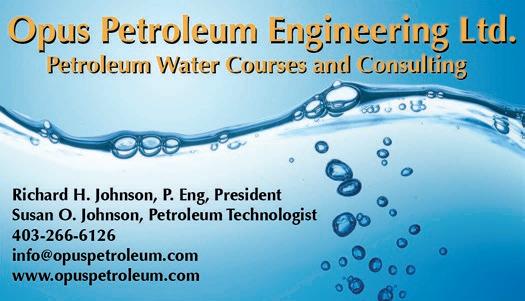








RESERVOIR ISSUE 01 • JANUARY 2015 19
petrographical & sedimentological descriptions for sampl (thin section - fluid inclusion studies) conventional vertical/horizontal wells operations geology SPECIALIZED IN GEOLOGICAL WELLSITE SUPERVISION AND CORE ANALYSIS
our best friend and most valuable partner is our clie Stephan C. Dragomi presid www .g e ok2. c om - phon e : 403.831.9941 - s dr a gomir @ g e ok2. c o • Domestic and International wellsite supervision • Conventional and Unconventional wells • Extensive Hz experience • Customized corporate solutions available (403) 250-3982 sales@clconsultants.ca www.clconsultants.ca elizabeth macey, B.A., cartographer .. 4039930055 emacey@telus.net www3.telus.net/elizabethmacey .. presentations posters graphics . maps technical illustrations 1602 – 5th St N.E. Calgary, AB. T2E 7W3 Phone: 403-233-7729 www.tihconsulting.com e-mail: tih@shaw.ca T.I.H. Consulting Ltd. Geologic Well -Site Supervision
ROCK SHOP
RockWell Consulting
2014 CSPG AWARDS
SPECIAL AWARD
President’s Special Recognition Award for Significant, Outstanding, and Sustained Contributions to Canadian Petroleum Geology
R. Perry Glaister
Robert G. McCrossan
TECHNICAL AWARDS
Stanley Slipper Gold Medal for Outstanding Career Contributions to Oil and Gas Exploration in Canada
Wayne K. Foo
R.J.W. Douglas Medal for Outstanding Contributions to the Understanding of Sedimentary Geology in Canada
George Pemberton
Honorary Membership for Distinguished Service to the Society
Paul MacKay
Link Award for Best Presentation – Technical Luncheon Series
Allard Martinius
Medal of Merit for Best Paper Related to Canadian Petroleum Geology
Jennifer Adams
Steve Larter
Barry Bennett
Haiping Huang
Joseph Westrich
Cor van Kruijsdijk
“The dynamic interplay of oil mixing, charge timing, and biodegradation in forming the Alberta Oil Sands: Insights from geologic modeling and biogeochemistry,” published in Heavy-oil and oil-sand petroleum systems in Alberta and beyond. AAPG Studies in Geology 64, p. 23-102 (2013)
VOLUNTEER AWARDS
President’s Award for Outstanding Service by a CSPG Member
Peter Hay
H.M. Hunter Award for Distinguished Service to the Society
Norbert Alwast
Tracks Award for Members Who Have Set New Standards of Excellence
Phil Esslinger
Dawn Hodgins
Geoffrey Speers
Eric Street
Partner Tracks Award for Associations, Companies or Institutions That Have Contributed to the Society’s Pre-eminence, Welfare and Reputation
The Association of Professional Engineers and Geoscientists of Alberta (APEGA) geoLOGIC systems ltd.
Service Awards for Members who have Served the Society for over Five Years
James Ablett
Linden Achen
Norbert Alwast
George Ardies
Peter Aukes
Bill Ayrton
Olena Babak
Jim Barclay
Philip Benham
Tim Bird
Graeme Bloy
Chuck Buckley
Mark Caplan
Jean-Yves Chatellier
Richard Chisholm
Nancy Chow
Andre Chow
Shawna Christensen
Penny Christensen
David Clyde
Douglas Colvin
Debbie Cook
Andrew Cook
Thomas Cox
Barrie Dargie
Tim De Freitas
Foon Der
Ian DeWolfe
Steve Donaldson
Tina Donkers
Eva Drivet
Dave Drover
Steve Dryer
Markus Ebner
Ashton Embry
Phil Esslinger
Richard Evoy
Peter Fermor
Patrick Fothergill
Jocelyn Frankow
Lloyd Freeman
Riona Freeman
David Garner
Chad Glemser
Darcie Greggs
Matthew Hall
Tony Hamblin
Peter Harrington
Peter Hay
Doug Hayden
Simon Haynes
Fran Hein
Denise Hodder
Dawn Hodgins
John Hogg
Norman Hopkins
Kristy Howe
Stephen Hubbard
Michele Innes
Dale Issler
Wim Jalink
Glenn Karlen
Don Keith
Ian Kirkland
Peter Kouremenos
Shawn Lafleur
Larry Lane
Sid Leggett
Alex MacNeil
Robin Mann
Ian McIlreath
Ben McKenzie
Margot McMechan
Dennis Meloche
David Middleton
Stephen Minions
Ryan Mohr
David Morrow
Tom Moslow
Rob North
Brenda Pearson
John Peirce
Guy Plint
Frank Pogubila
Bob Potter
Brian Pratt
Weishan Ren
Claude Ribordy
Kevin Root
Terry Sami
Chris Seibel
Stacia Skappak
Heather Slavinski
Randy Smith
Tom Sneddon
Meghan Speers
Lavern Stasiuk
Frank Stoakes
Glen Stockmal
Naomi Storey
Martin Teitz
Scott Thain
Richard Thom
Clint Tippett
Tony Wain
John Waldron
Michael Webb
Gerald Wendland
Jay Williams
Andrew Willis
Keith Yaxley
John-Paul Zonneveld
Volunteer Awards for Members who have served the Society for up to Five Years
Kyle Anderson
Sajjad Ansari
Bill Arnott
Ryan Axani
Graham Banks
Kent Barrett
Kelly Batten Hender
Jessica Beal
Nadine Beaudoin
Ali Beken
Barry Bennett
Khaled Benzaoui
Michael Blair
Jeff Boissonneault
Mary Luz Borrero
Sonia Brar
Ryan Brenner
Christy Brisebois
Carson Brown
Edlyn Bruni
Gary Bugden
Whitney Bysterveld
Octavian Catuneanu
Gareth Chalmers
Burns Cheadle
Guoxiang Chi
Michelle Clements
John Cockbill
Peter Cooper
Noel Devere-Bennett
Ruben Dominguez
James Duggan
Carmen Dumitrescu
Kyle Durocher
20 RESERVOIR ISSUE 01 • JANUARY 2015
Nanna Eliuk
Mona Enachescu
Marc Enter
Alison Essery
Colin Etienne
Mathew Fay
David Finch
Jeff Fisher
Francis Fortin-Morin
Amy Fox
Jason Frank
Jean-Francois Gagnon
Walt Gamp
Robert Gardner
David Gardner
Dan Gee
Raymond Geuder
Sasan Ghanbari
Sharon Gray
Meriem Grifi
Tony Habib
Dale Hardcastle
Nancy Harland
Richard Harris
Tim Hartel
Mehran Hassanpour
Gareth Hatto
Caterina Heikkinen
Brian Hester
Amir Hosseini
Roger Hume
Laura Hynes
Melany Hysert
Art Irwin
Biyi Ishola
Bryce Jablonski
Rebecca Jacksteit
Trevor Johnson
Samantha Jones
Tyler Klatt
Melanie Klucker
Carl Knudsen
Jürgen Kraus
Nate Kreiger
Ross Kukulski
Glenn Larson
Jason Lavigne
Jim Lee
Matt Leforte
Paul Levesque
Jaime Lo
Adam MacDonald
Kevin Mageau
Robert Mahood
Sabita Makoon-Singh
Vanessa MarcheggianiCroden
Leena Markatchev
Allard Martinius
Jane Marzetti
Darin McCollum
Heidi McDonald
Jayd McGrath
Les McMillan
Megan Miller
Keith Millis
Peter Miskell
Aliyyah Mohamed
Kevin Morrison
Andrew Mort
Hugh Mosher
Jacey Neumann
Melissa Newton
Eric Niven
Jon Noad
Jennifer Noade
Darcy Novak
Brett Nwokeforo
Ted Ogungbe
Taylor Olson
Robert Panek
Kevin Parks
Chad Pennell
Mary-Ellen Price
Kevin Pyke
Garrett Quinn
Diana Ramirez Aguilar
Melanie Regehr
Duncan Robertson
Cindy Robinson
Mike Rogers
Kristin Rohr
Jen Russel-Houston
Deborah Sanderson
Cynthia Sawatzky
Armin Schafer
Tyler Schmidt
Jesse Schoengut
Lianabel Selviz
Nicole Sendziak
Jason Shtand
Megan Simons
Brant Skibsted
Catherine Skilliter
Kelly Skuce
Warren Smart
Geoffrey Speers
Ron Spencer
Stan Stancliffe
Achilles Stavropoulos
Eric Street
Rudy Strobl
Percy Strong
Amy Switzer
Ryan Szol
Damien Thenin
Andrew Thomas
Eric Thornhill
Brian Tuffs
Elizabeth Turner
Victoria Walker
Pei-Ling Wang
Marissa Whittaker
Dan Wright
Tiffiny Yaxley
Denise Yee
Stefan Zanon
Yi Zhao
Awards will be presented at the CSPG Awards Ceremony during GeoConvention 2015 (May 4-8, 2015)

RESERVOIR ISSUE 01 • JANUARY 2015 21
Annual General Meeting Please join us on January 8th, 201 for the CSPG AGM and first Technical Luncheon of 201 AGM - 11:30am - 12:00pm Technical Luncheon - 12:00pm - 1:00pm For more information and to register online please visit www.cspg.org 5 5
CSPG
THE 2015 CSPG EXECUTIVE COMMITTEE
PRESIDENT – TONY CADRIN
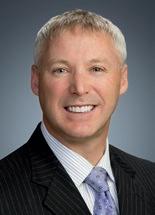
EDUCATION : B.Sc. Geology, University of Saskatchewan (1985); Ph.D. Geology, University of Saskatchewan (1992).
EXPERIENCE: VP Geosciences, Thunder Energy Trust/ Sword Energy/Journey Energy (2006-Present); Geoscience Manager, Thunder Energy Trust (2005-2006); Geologist, Impact/Thunder Energy (2001-2005); Geologist, Startech (20002001); Geologist, Anderson Exploration (1997-2000); Geologist, PanCanadian (1991-1997).
PROFESSIONAL
MEMBERSHIPS: CSPG, AAPG, APEGA, CSEG.
CSPG ACTIVITIES: CSPG East Coast Ambassador (2013); 2010 GeoCanada Convention (2010); CSPG Committee on Conventions/ JACC (2005-2010); CSPG Webcasts Program (2003-2004); Tech Lunch Committee Chair/ Link Committee (20022005); CSPG Program Director (2001); CSPG Services Director (1998-1999); Convention Technical Committee and session Chair (1988); Student Industry Field Trip Committee member/Chair (1991-1996); CSPG Member since 1984.
AWARDS: CSPG Presidents Award 2009; CSPG Volunteer Award; CSPG Services Award; CSPG Tracks Award.
PRESIDENT ELECT – GREG LYNCH
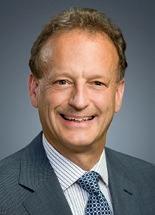
EDUCATION : B.Sc. Geology, University of Ottawa (1983); M.Sc. Geology, Washington State University (1985) Ph.D. Geology, University of Alberta (1989).
EXPERIENCE: Shell Canada Ltd (1998-present); Geological Survey of Canada (1989-1998).
PROFESSIONAL
MEMBERSHIPS: CSPG, APEGA.
VOLUNTEER WORK:
CSPG/CSEG/CWLS GeoConvention General Co-Chair – Integration (2013); Geoconvention Partnership Agreement Committee (2012-2013); GeoCanada 2010 Convention Organizing Committee; CSPG Finance Director (2010-2011); Earth Science for Society Committee (2009-2010); CSPG Trust Fund Committee (2007-2009); CSPG Outreach Director (2007-2009); CSPG Bulletin Associate Editor (2001-2007); SIFT Fieldtrip Leader (1999-2005); CSPG speaker and chair at several conventions and luncheons; 20 refereed publications within and outside CSPG.
AWARDS: CSPG Volunteer/Service Awards; CSPG Tracks Award.
PAST PRESIDENT – DALE LECKIE
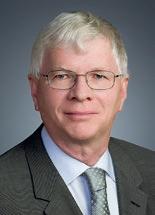
EDUCATION : B.Sc. (Honours), University of Alberta (1977); M.Sc., McMaster University (1979); Ph.D., McMaster University (1984).
EXPERIENCE: Nexen Energy ULC (1998-present); Geological Survey of Canada (1985-1998); Petro-Canada (1983-1985).
PROFESSIONAL
MEMBERSHIPS: CSPG, AAPG, APEGA, APEGS, SEPM.
CSPG ACTIVITIES: CSPG Conference Organization; Co-Organizer of 2009 CSPG William C. Gussow Geoscience Conference “Towards Sustainable Oil Sands Development.” Oct 5-7, 2009, Banff, Canada; Co-Chaired 1988 CSPG Conference on Sequences, Stratigraphy, Sedimentology: Surface and Subsurface (1,100 delegates); CSPG Technical Luncheon Presentations – 2009, 2004, 1997, 1995, 1996a, 1996b, 1993, 1987, 1985.
PUBLICATIONS: Bulletin of Canadian Petroleum Geology – 16 papers; CSPG Memoirs and others – 6 papers; Edited CSPB Books, Co-Editor of CSPG 1988 Memoir 15, Sequences, Stratigraphy, Sedimentology: Surface and Subsurface, Leckie, D.A. and Barclay, J.E. 2011. Gas Shale of the Horn River Basin – Discovery, Potential and Future, CSPG Publication; Numerous CSPG Core Conference and Field Trip publications; CSPG Gussow Conference Committee Chair – 2011/12.
AWARDS: CSPG Medal of Merit (2005), best paper in Canadian Petroleum Geology; CSPG Service Award 1996/97; CSPG Link Award 1995; CSPG Medal of Merit (1987), best paper in Canadian Petroleum Geology; CSPG Distinguished Lecturer 1986; CSPG Honourable Mention, Best Ph.D. thesis (1985); Several AAPG and SEPM awards.
FINANCE DIRECTOR – ASTRID ARTS
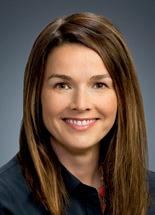
EDUCATION : B.Sc. (Honours), Geology, University of Alberta (1995); M.Sc., Earth and Atmospheric Sciences, University of Alberta (2000).
EXPERIENCE: Cenovus Energy (2013-Present); Barrick Energy (2011-2013); ConocoPhillips Canada/Conoco/Gulf/Crestar (1998-2006).
PROFESSIONAL
MEMBERSHIPS: CSPG, AAPG, APEGA, SPE.
CSPG ACTIVITIES: Chair Electronic Communications Committee (2005-2009); CSPG Executive - Services director (2004-2005); Educational Trust Fund - Director (2003); Diamond Jubilee Convention - Publicity & Marketing Chair (2002); Digging Deeper, Diamond Jubilee Convention -Publicity & Marketing Chair (2002); Rock the Foundation Convention – Special Events Chair (2001).
AWARDS: CSPG Tracks Award (2002, 2009), CSPG Service Award (2001, 2005, 2010).
22 RESERVOIR ISSUE 01 • JANUARY 2015
FINANCE DIRECTOR ELECT – SCOTT LEROUX
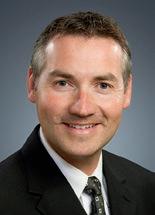
EDUCATION : B.Sc. Geography, Simon Fraser University (1998); M.Sc., Earth Sciences, Simon Fraser University (2000).
EXPERIENCE: Long Run Exploration (2014-present); Surge Energy (2011-2014); Encana Corporation/Pan Canadian (2000-2011).
PROFESSIONAL MEMBERSHIPS: CSPG, APEGA, CWLS, SEPM.
VOLUNTEER WORK: CSPG Executive – Program Director (2009-2011); Technical Program Chair 2008 CSPG/CSEG/CWLS annual Joint Convention; CSPG Committee on Conventions – now JACC (2004-2006 & 2009-2011); Chair (2yrs) and Co-Chair (2yrs) of the CSPG Sedimentology Division (2001–2004); Student Industry Field Trip (SIFT) – Clastic Core Workshop (2001-2003).
AWARDS: CSPG Volunteer/Service Awards; CSPG Graduate Student Award – Best Msc. Thesis - 2001.
DIRECTOR – MARK CAPLAN
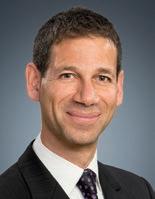
EDUCATION : B.Sc. (Honours) Geology, University of Wales (1989); M.Sc. Geology, University of Alberta (1992); Ph.D. Geology, University of British Columbia (1997).
EXPERIENCE: Senior Geological Advisor, Athabasca Oil Corporation (2014-Present); Geoscience Manager, Athabasca Oil Corporation/Brion Energy (2007-2014); Staff Geologist, Shell Canada Ltd. (2002-2007); Geologist, Total S.A. (1997-2002).
PROFESSIONAL MEMBERSHIPS: CSPG, AAPG, APEGA, CHOA, CWLS, SEPM.
VOLUNTEER WORK: Basin Analysis and Sequence Stratigraphy Technical Division Co-Chair (2004 - Present); CSPG GeoConvention Session Co-Chair (2004-2014); CSPG Core Convention Co-Chair (2004).
AWARDS: CSPG Volunteer Award (2007); CSPG Service Award (2009, 2010, 2011, 2012, 2013).
DIRECTOR – MILOVAN FUSTIC

EDUCATION : B.Sc. (Geology), Laurentian University (1985); M.Sc. (Geology), University of Alberta (1988).
EXPERIENCE: Statoil Canada Ltd. (2011-present); Nexen Energy ULC (2006-2011); Petroleum Reservoir Group, University of Calgary (2004-2006); Albian Sands Inc. (2000-2004); TIH Consulting Ltd. (1997-2000); Magnohrom (1994-1997); Naftagas (1993-1994).
PROFESSIONAL MEMBERSHIPS: CSPG, APEGA, AAPG, CHOA, IAS, SEPM.
CSPG ACTIVITIES: CSPG Technical Chair for GeoConvention 2013; CSPG GeoConvention Session Chair (2009, 2011); CSPG Technical Luncheon Presentation 2013; CSPG Short Course and Field Trip Instructor (2010-present).
AWARDS: CSPG Medal of Merit (2011), best paper in Canadian Petroleum Geology; CSPG Medal of Merit Honourable Mention (2009), Geoscience Advancements (2002).
DIRECTOR – MICHAEL LABERGE
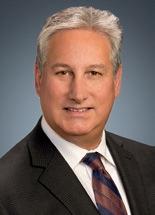
EDUCATION : B.Sc. (Honours, Geology and Biology), Dalhousie University, Halifax, Nova Scotia (1977).
EXPERIENCE: Geologist, Channel Energy Inc. (present); Senior Exploration Geologist, Surge Energy Inc. (2010-2013); Geologist, Channel Energy Inc. (2008-2011); Partner, Intercept Resources Inc. (2007-2008); VP Exploration, Tuscany Energy Ltd (2007); VP Exploration, SunOcean Energy Ltd. (2005-2007); Geologist, Channel Energy Inc. (1999-2005); Consulting Geologist/ Co-Manager Exploration Geology/ District Manager. Crestar Energy Inc. (1991-1999); VP Exploration, Tarragon Oil and Gas Limited (1990- 1991); Exploration Manager, Vanguard Petroleum Limited (1985-1989); Geologist, Flame Oil & Gas Ltd. (1980-1985); Geologist, Amoco Canada Petroleum Company Limited (1977-1980).
PROFESSIONAL
MEMBERSHIPS: CSPG, AAPG
CSPG ACTIVITIES: Classic Gold Committee (1993-2013); Advisory Committee for the Advantage Program (1994-1995).
AWARDS: CSPG Tracks Awards (2012); CSPG Service Award (1994, 2009, 2010, 2011).
(Continued on page 24...)
RESERVOIR ISSUE 01 • JANUARY 2015 23
DIRECTOR – RYAN
LEMISKI
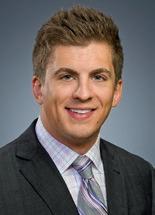
EDUCATION : B.Sc. Honors Geology, University of Alberta (2006); M.Sc. Earth and Atmospheric Sciences, University of Alberta (2010); P.Geo.
EXPERIENCE: Petrophysicist, Nexen Energy ULC (2012 - Present); Exploration Geologist, Talisman Energy Inc. (2011-2012); Petroleum Geologist, Northwest Territories Geoscience Office (2010-2011).
PROFESSIONAL MEMBERSHIPS: CSPG, AAPG, APEGA, CWLS
VOLUNTEER ACTIVITIES:
‘On Belay’ Session Chair, 2014 GeoConvention (2014); bicisport Calgary Cycling Club (2014); Lead, Canada Region Young Professionals AAPG (2010-Present); Vice President / Treasurer, Canada Region of the AAPG (2013-2014); Secretary / Forman, Canada Region of the AAPG (2012-2013); Delegate, Canada Region of the AAPG (2012-Present).
AWARDS: Best Student Core Presentation, 2008 GeoConvention.
DIRECTOR – ROBERT MUMMERY

EDUCATION : Univ. of Western Ontario, Hons. B.Sc. Geology (1968); McMaster University, Ph.D. Geology (1973).
EXPERIENCE: District Geologist/Chief Staff Geologist, Home Oil; Chief Geologist/Vice President-Interpretation/Vice President, Seieslog; Executive Vice President, Teknica Resource Development Ltd.; Manager Strategic Exploration Projects/ Foothills Team Leader/Northern Team Leader, Wascana/Saskoil; Founder/Vice President – Exploration, Golden Eagle Energy; Corp. Director, Unbridled Energy Corp.; Director, Altima Resources Inc.
PROFESSIONAL MEMBERSHIPS: APEGA, AAPG, CGC, CSEG, CSPG, CNC/IUGS, MNABES, MACST, SEG.
DIRECTOR – DARREN ROBLIN
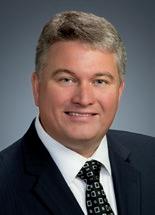
EDUCATION : B.Sc. E (Honours, Geological Engineering), Queen’s University, Kingston, Ontario (1997); MBA, University of Calgary – Haskayne School of Business (2013).
EXPERIENCE: Chief Geophysicist, Endurance Energy (2013-Present); Geophysical Manager, Marquee Energy (2012-2013); Exploration Manager, Shale Petroleum (2012); Geophysical Advisor, NuVista Energy (2003-2012); Senior Geophysicist, BonaVista Energy (2000-2003); Geophysicist, Crestar Energy (1997-2000).
PROFESSIONAL MEMBERSHIPS: CSPG, AAPG, APEGA, CSEG.
DIRECTOR – JEN RUSSEL-HOUSTON
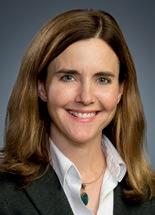
EDUCATION : B.Sc. (Honors) Geology, Queen’s University (1995); B.Ed, Ottawa University (1996); Ph.D. Geology, Dalhousie University (2001).
EXPERIENCE: VP – Geoscience, Osum Oil Sands Corp. (2008 - Present); Subsurface Team Lead & Geologist, Shell (2001-2008).
PROFESSIONAL MEMBERSHIPS: CSPG, AAPG, IAS, SPE.
CSPG ACTIVITIES: Associate Editor, Bulletin of Canadian Petroleum Geology (2010 – Present); Volunteer Committee (2012-2013).
AWARDS: Volunteer Award (2012-2014).
DIRECTOR – ERIC STREET
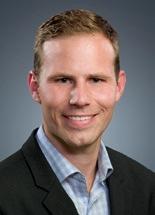
EDUCATION : B.Sc. Earth Science, Simon Fraser University (2009).
EXPERIENCE: Jupiter Resources (2014-Present); Petroamerica Oil Corp. (2014); Suroco Energy (2011-2014); Encana Corporation (2009-2011).
PROFESSIONAL
MEMBERSHIPS: CSPG, AAPG, APEGA.
CSPG ACTIVITIES: GeoConvention 2014 Technical Co-Chair.
AWARDS: Tracks Award (2014).
24 RESERVOIR ISSUE 01 • JANUARY 2015 (...Continued from page 23)



Did you know there is over $26,000 available in CSPG awards and scholarships?! STUDENTS! Scholarship/Award Amount available Applica�on Deadline Regional Graduate Scholarship 4 x $1000 January 15, 2015 Undergraduate Awards 4 x $1000 January 23, 2015 Student Event Grants 5 x $1000 March 6, 2015 Graduate Master’s Thesis Award $4000 September 15, 2015
Doctoral thesis Award $5000 September 15, 2015 Andrew Baillie Award 2 x $2000 GeoConven�on 2015
Graduate
HONORARY MEMBER –
Dr. Jeffrey Packard

Dr. Jeffrey Packard earned his B.Sc. in Geology from Concordia University in 1976. In 1983 Jeff and his wife Buffy moved to Calgary where Jeff was employed at the Geological Survey of Canada working on the geology of southern Ellesmere Island. In 1985, he graduated from the University of Ottawa with a Ph.D. in Geology after defending his doctoral dissertation on stratigraphy and carbonate sedimentology of the Upper Silurian Barlow Inlet Formation in Canada’s High Arctic. He followed this with a further year of postdoctoral studies, at the GSC’s Institute of Sedimentary and Petroleum Geology.
Dr. Packard joined the CSPG in 1985 and the next year instigated and then chaired the Canadian Reef Inventory Project through its five year life, culminating in an extremely successful international research symposium, and the publication of CSPG Memoir 13 – “Reefs: Canada and Adjacent Areas.” He was a member of the Geological Atlas team from 1991 through 1994, and then became the General Chair for carbonate sessions at the 1994 Convention. In 1997, he co-chaired the CSPG-SEPM Joint Conference. This convention saw a number of firsts including the establishment of the Core Meltdown. In 2004, he cochaired the Dolomite Conference, a highly successful three day. He started his three year Executive term in 2004. In particular as President and Past President, Jeff worked diligently to bring about a greater degree of cooperation within the Canadian geosciences community, which culminated in the founding of the Canadian Federation of Earth Sciences.
In 2009, he was a co-instigator of Foundations: a public outreach effort relating Canadian landscape art with bedrock geoscience in conjunction with the Glenbow Museum and the International Year of Planet Earth. From 2007 through 2010, Dr. Packard was a director of the
Canadian Federation of Earth Sciences, as well as the Associate Editor for the Bulletin. He participated in the Steering Committee for the GeoCanada2010 Convention. From 2010 to 2012 Jeff was CSPG’s representative on Canada’s International Geological Congress 2020 bid committee. In the last few years, he has been a Member and Chair (2012) of the Earth Science for Society Organizing Committee, as well as a member of Arctic Medal committee. Jeff was a founder of the Carbonate Liars Club of Calgary in 1988. This ad hoc but remarkably successful group dedicated to the informal exchange of technical information and ideas pertaining to carbonates, (as well as the consumption of beer!), still thrives in 2014. Jeff’s extensive involvement in CSPG has earned him 7 Awards: a Tracks Award (1987), a President’s Award (1998), two Service Awards (2004, 2013) and three Volunteer Awards (2008, 2010, 2012).
The father of three sons, Jeff has been volunteering in his community and his boys sporting activities since 1993, including as a District Captain for Alberta Heart and Stroke, Beaver Leader, soccer coach and member of the local outdoor ice rink maintenance crew. He also was a Councilor of the Geological Association of Canada (2007-2009).

26 RESERVOIR ISSUE 01 • JANUARY 2015
As if his volunteer work didn’t keep him busy enough, his work experience is just as extensive. He started with Urangesellschaft Canada in 1974 as a Uranium Exploration Geologist. During his Ph.D. studies, he worked as a sessional lecturer at the University of Ottawa, and then as a Post-Doctoral Fellow at the GSC. He started work in the oil patch at Texaco as their Carbonate Specialist in 1986, then filled a similar role at Esso. Dr. Packard started consulting in 1992, working at a wide range of projects including exploration and development, and multi-client regional studies. From 1998 through 2006, he was Senior Carbonate Specialist and Explorationist, first at Poco, then Burlington, followed by a year as the Senior Geologist, Paleozoic Lead at ConocoPhillips. His last role before retiring in 2011 was Advisor of Sedimentology at Talisman, principally working international projects. Here he completed multiple tours of field work in northern Iraq, and in Indonesia. Following retirement, in response to his growing concern over the adverse impacts of fossil fuel usage, he
GEOEDGES
volunteered in 2013 as an Earth Science Specialist at the Pembina Institute, an environmental NGO and think-tank. Most recently Jeff, unable to entirely give up his love for geology, has been employed as a contract carbonate specialist at Enhance Energy, doing reservoir groundwork for a carbon sequestration and enhanced oil recovery project.
Throughout his distinguished career, Dr. Packard has published extensively on a wide range of topics, and has made significant contributions on brine reflux and hydrothermal dolomitization, silicification and karsting, as well as various aspects of Paleozoic Arctic geology.
He has contributed at least 28 papers to various CSPG-hosted conferences and has delivered a number of CSPG Technical Luncheon talks.
Over his career, Dr. Jeffrey Packard has been a teacher, carbonate specialist, explorationist, consultant, and writer. He has had the opportunity to work
in the mining, academic, government, and petroleum sectors. This breadth of exposure in the world of geoscience is unusual and most laudable, although Jeff is quick to credit his “serendipitous” but rewarding career to an uncanny inability to focus! Nonetheless he has made important contributions to the upstream oil industry, which consistently demonstrates a critical understanding of the complex interplay of geological processes and petroleum accumulation. His volunteerism is exemplary and his leadership in both CSPG and industry is well known. The CSPG is proud to welcome Dr. Jeffrey Packard into the ranks of Honorary Members.
Texas & Midcontinent US Geological Edge Set
Western Canada: Slave Point, Swan Hills, Leduc, Grosmont, Jean Marie, Horn River Shales, Elkton, Shunda, Pekisko, Banff, Mississippian subcrops and anhydrite barriers in SE Sask., Bakken, Three Forks, Montney, Halfway, Charlie Lake, Rock Creek, Shaunavon, BQ/Gething, Bluesky, Glauconitic, Lloyd, Sparky, Colony, Viking, Cardium, CBM, Oilsands Areas, Outcrops
US Rockies & Williston: Red River, Mississippian subcrops & anhydrite barriers (Bluell, Sherwood, Rival, etc), Bakken, Three Forks, Cutbank, Sunburst, Tyler, Heath, Muddy, Dakota, Sussex, Shannon, Parkman, Almond, Lewis, Frontier, Niobrara, Mesaverde shorelines, Minnelusa, Gothic, Hovenweep, Ismay, Desert Creek, Field Outlines, Outcrops
Texas & Midcontinent: Granite Wash, Permian Basin paleogeography (Wolfcampian, Leonardian, Guadalupian), Mississippian Horizontal Play, Red Fork, Morrow, Cleveland, Sligo/Edwards Reefs, Salt Basins, Frio, Wilcox, Eagleford, Tuscaloosa, Haynesville, Fayeteville-Caney, Woodford, Field Outlines, Outcrops, Structures
North American Shales: Shale plays characterized by O&G fields, formation limit, outcrop, subcrop, structure, isopach, maturity, stratigraphic crosssections. Includes: Marcellus, Rhinestreet, Huron, New Albany, Antrim, UticaCollingwood, Barnett, Eagleford, Niobrara, Gothic, Hovenweep, Mowry, Bakken, Three Forks, Monterey, Montney, Horn River, Colorado
Eastern US / Appalachia: PreCambrian, Trenton, Utica-Collingwood, MedinaClinton, Tuscarora, Marcellus, Onondaga Structure, Geneseo, Huron, Antrim, New Albny, Rhinestreet, Sonyea, Cleveland, Venango, Bradford, Elk, Berea, Weir, Big Injun, Formation limits, Outcrops, Allegheny Thrust, Cincinatti Arch, Field outlines
Mexico: Eagle Ford-Agua Nueva, Pimienta, Oil-Gas-Condensate Windows, Cupido-Sligo and Edwards Reefs, Tuxpan Platform, El Abra-Tamabra facies, Salt structures, Basins, Uplifts, Structural features, Sierra Madre Front, Outcrops, Field Outlines
Deliverables include:
-Shapefiles and AccuMap map features -hard copy maps, manual, pdf cross-sections -Petra Thematic Map projects, GeoGraphix projects, ArcView map and layers files
-bi-annual updates and additions to mapping -technical support
RESERVOIR ISSUE 01 • JANUARY 2015 27
Western
Geological
Northern
Geological
Eastern
North
Geological
Detailed
accurate
AccuMap, GeoScout
other applications for information contact: Joel Harding at 403 870 8122 email joelharding@geoedges.com www.geoedges.com
Canada
Edge Set
US Rockies & Williston Basin
Edge Set
US / Appalachian Basin Geological Edge Set
American Shales
Edge Set (all colors)
and
geology at your fingertips in Petra, GeoGraphix, ArcGIS,
and
INC. Mexico Geological Edge Set

GO TAKE A HIKE
Old Fort Point, Jasper National Park, Alberta
|
By Mark D. Smith, Bill Arnott and Gerry Ross
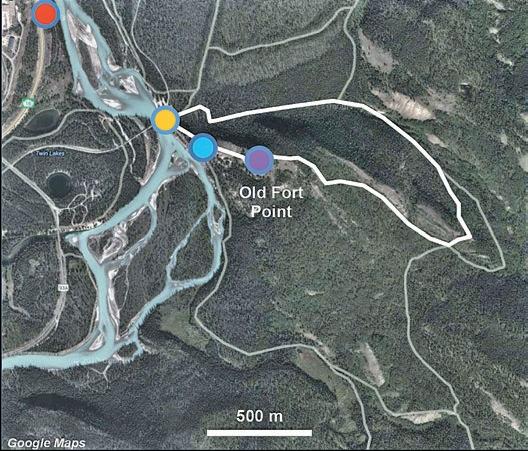
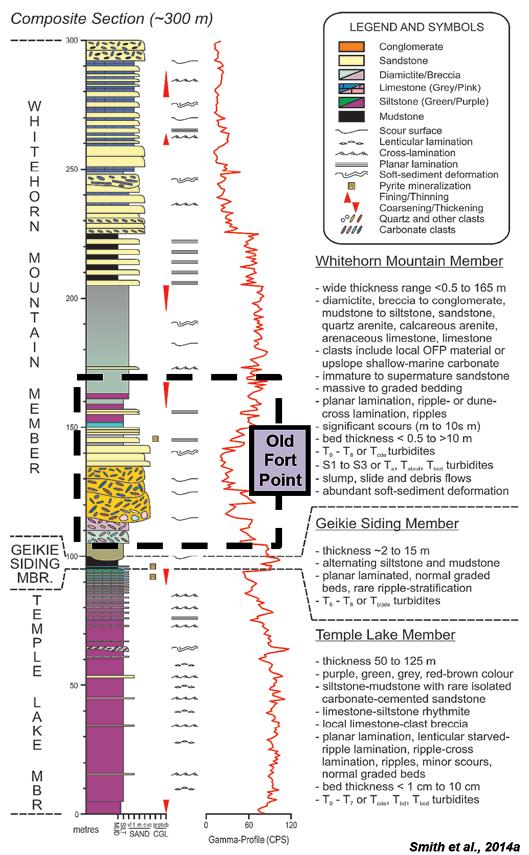
Trailhead: Turn onto Hazel Avenue from either Connaught Drive (in Jasper) or Highway #16. Turn left approximately 0.2 km from Highway #16 and follow the road to the parking area at Old Fort Point. A number of trails begin in this area, but to hike the Old Fort’s loop #1, climb the steep wooden stairs and continue along the ridge to the lookout and then follow the signage to stay on the #1 trail.
Distance: The Old Fort’s loop #1 trail is about 3.5 km long and takes 1-2 hours to complete. Elevation gain is about 130 m.
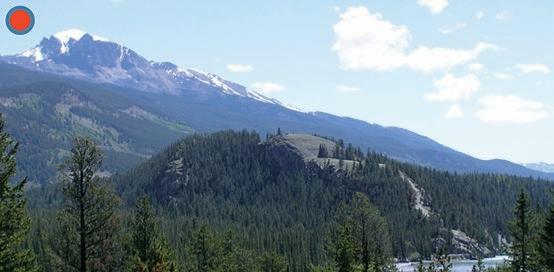
The Old Fort Point trail (Old Fort’s loop #1) is popular with both locals and tourists because of its close proximity to Jasper and the expansive 360°views of the townsite, valley and surrounding mountains. The most notable topographic feature in the valley is the exposed core of the Jasper Anticlinorium in the footwall of the Pyramid Thrust Fault (Charlesworth et al., 1967). Thrust faults, folding and metamorphism in the area are the result of the collision and accretion of allochthonous terranes against the margin of ancestral North America during the Cordilleran Orogeny. Precambrian-aged (Neoproterozoic) rocks of the Windermere Supergroup (WSG) crop out at this location, including the Old Fort Point Formation (OFP), which derives its name from the site (Charlesworth et al., 1967).
The WSG is interpreted to have deposited in two phases: the first phase relatively synchronous with rifting during breakup of the supercontinent Rodinia followed by the second phase during thermal relaxation along a widespread continental margin. Regional correlations within the Precambrian are a challenge compared to younger rocks because of the lack of biostratigraphic control. The OFP is a distinctive litho- and chemostratigraphic marker in the post-rift, deep-marine siliciclastic Miette Group (and WSG) of the southern Canadian Cordillera. It is mappable over 35,000 km2 and helps constrain the WSG stratigraphic framework of across structurally deformed terranes (Smith et al., 2014a,b). At Old Fort Point (Left: OFP section), only part of the Whitehorn Mountain Member is exposed but not the two more regionally correlatable lower two members.
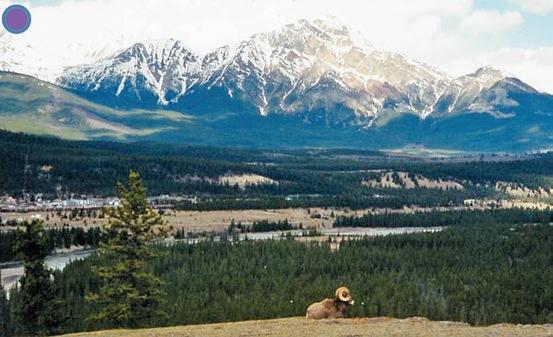
28 RESERVOIR ISSUE 01 • JANUARY 2015
View of Old Fort Point from Highway #16
View from Old Fort Point lookout
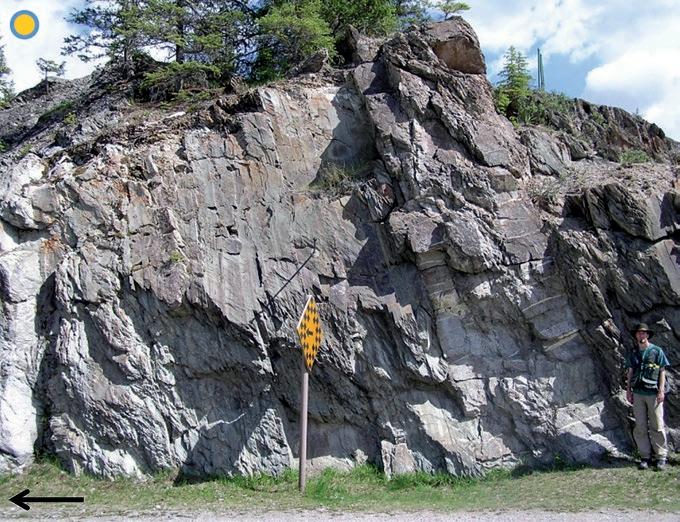
Roadcut outcrop of overturned beds of the Whitehorn Mountain Member consisting of siltstones and sandstones deposited by turbidity currents and carbonate-clast breccias deposited by submarine mass-wasting and/or debris flows. Breccia units have a lenticular geometry with observable thickness changes when hiking along the trail along the ridge of Old Fort Point. Arrow indicates upwards stratigraphic direction.
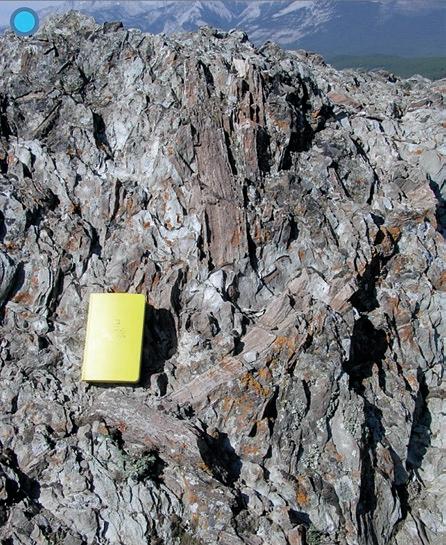
Carbonate-clast breccia deposited in an interpreted submarine canyon. Carbonate clasts (up to 1 m long) are derived from the distinctive rhythmic limestone-siltstone turbidites of the Temple Lake Member (not exposed at Old Fort Point).
REFERENCES
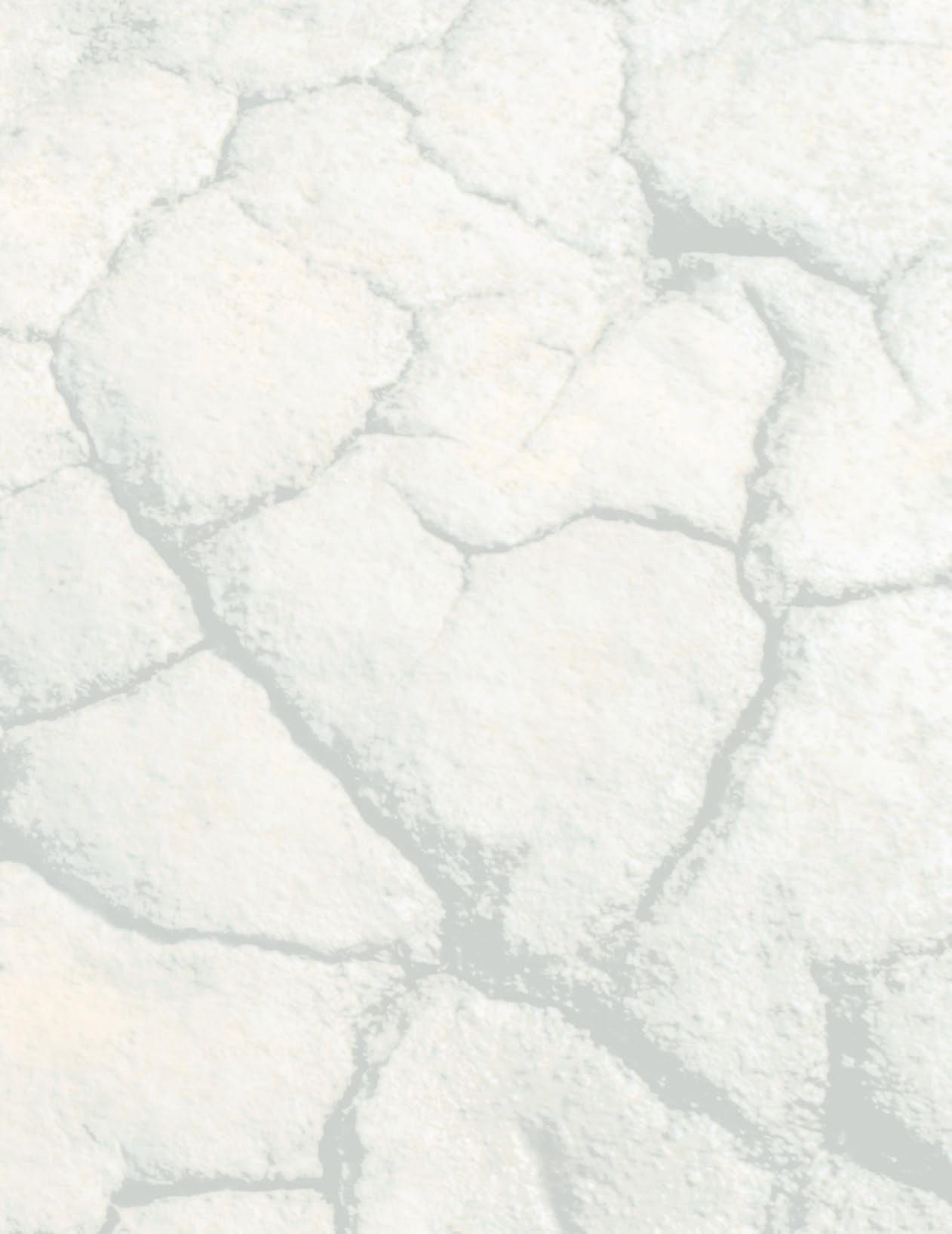

Different structural fabrics reflect differences in rheology in OFP strata. Slaty cleavage in less competent mudstone-siltstones vs. quartz-filled tension gashes in more competent sandstones. Arrow indicates upwards stratigraphic direction.
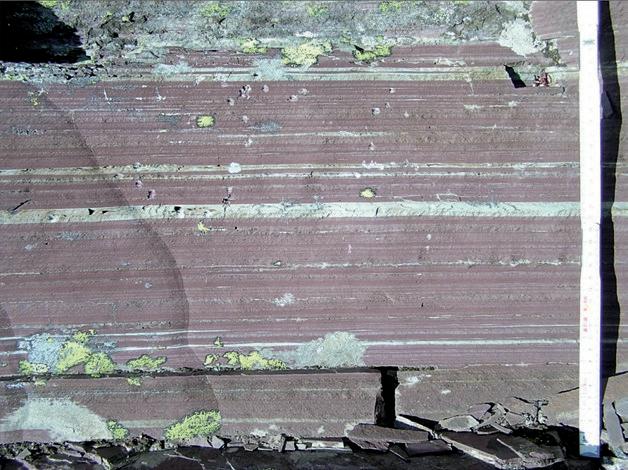
Distinctive purple- and green-coloured fine-grained turbidites of the OFP that are common to both the Temple Lake and Whitehorn Mountain members in the Jasper and Lake Louise areas. The colour variation is the result of fluctuating bottom-water and/or shallow-substrate oxidation conditions during deposition from turbidity currents.
The Reservoir Committee welcomes contributions from our readership to this series. If you wish to offer a submission to Go Take a Hike on your favourite hike of geological interest, email the Reservoir at Emma.MacPherson@cspg.org for more information.
Charlesworth, H.A.K., Weiner, J.L., Akehurst, A.J., Bielenstein, H.U., Evans, C.R., Griffiths, R.E., Remington, D.B., Stauffer, M.R. and Steiner, J. 1967. Precambrian Geology of the Jasper Region, Alberta, v.23 74 p.
Smith, M.D., Arnott, R.W.C. and Ross, G.M. 2014a. The Old Fort Point Formation: Redefinition and formal subdivision of a distinctive stratigraphic marker in the Neoproterozoic Windermere Supergroup, southern Canadian Cordillera. Bulletin of Canadian Petroleum Geology, v. 62, p. 1-13.
Smith, M.D., Arnott, R.W.C. and Ross, G.M. 2014b. Physical and geochemical controls on sedimentation along an ancient continental margin: The deep-marine Old Fort Point Formation (Ediacaran), southern Canadian Cordillera. Bulletin of Canadian Petroleum Geology, v. 62, p. 14-36. www.gemtrek.com. Jasper and Maligne Lake Hiking Guide and Map, Gem Trek Publishing.
RESERVOIR ISSUE 01 • JANUARY 2015 29
THE VALUE OF BOREHOLE IMAGE LOGS Part 1: Introduction to Borehole Image Logs and Why They Should be Run
| By Amy Fox, Canadian Discovery Ltd., Kris Vickerman, HEF Petrophysical Consulting Inc.
INTRODUCTION
Wellbore image logs have always been considered “specialty” logs. This threepart article series will address the reasons why that is the case as well as the reasons why it shouldn’t be. A good image log is an incredibly valuable piece of data that, in many cases should be considered just as critical as any “regular” log, perhaps even more so. Image logs shouldn’t gather (now electronic) dust in the geologist’s office, but should be used to better understand reservoirs and to complete wells in a way that maximizes the potential for production.
A BRIEF HISTORY OF IMAGE LOGS
Wellbore image logs have been around for about 40 years, since Mobil first patented the BoreHole TeleViewer (BHTV), the first acoustic imaging tool. Prior to that time some downhole still and video cameras were used, which later evolved into modern-day optical imaging tools, but these were and are mainly used in water wells because they require clear fluid. In the late 1980s electrical image logs came on the scene via Schlumberger’s Formation MicroScanner (FMS). Over time all the major service companies have developed and improved upon acoustic and electrical image logging tools which now come under variety of names such as Schlumberger’s High Resolution Formation MicroImager (FMI-HD), Weatherford’s EarthView, Halliburton’s Water Based Mud Imaging (XRMI), Baker Hughes’ UltrasonicXplorer Imaging Service, and dozens more. The beginning of the 2000s saw the development of the first electrical image logs capable of running in nonconductive (oil-based) mud systems, Schlumberger’s OBMI and followed soon thereafter by Baker Hughes’ EI and others. Further, LWD images using gammaray, density or resistivity measurements are now available.
Casual use of the term “FMI log” for a borehole image is analogous to asking for a “Kleenex” when one needs a facial tissue; most people know what it means, but it’s not technically correct terminology. For more on the history and types of image logs, see AAPG Discovery Series No. 13 Atlas of

Borehole Imagery (Thompson, 2009).
Borehole image logging gained prominence in the late 1990’s and early 2000’s following the development of deep structural gas plays in the Alberta and British Columbia foothills, transitioning from dipmeters (single or dual electrodes per pad) and acoustic images to oil-based electrical images in the uphole sections with water-based images typically ran over reservoir intervals. In the Oil Sands, many hundreds of image logs are acquired every year for stratigraphic delineation, and that remains the most popular use of the technology in terms of number of logs run today. Other Western Canadian reservoirs that are imaged include some faulted and structured shale gas plays, structured Cardium liquids plays as well as continued development in older fields like Turner Valley.
Today, the wireline business in general is suffering somewhat from the preponderance of statistically drilled/completed wells, as engineers tend to undervalue the information in geologic data. Hopefully that tide is turning as we find we are not getting the economic return we expected from this approach.
WHAT IS A BOREHOLE IMAGE LOG?
A borehole image log (excluding optical images) is really a false-color image – that is, it is a representation, in colour, of some property. In electrical imaging that property is electrical conductivity, and in acoustic imaging it is the amplitude and travel-time of an acoustic signal. Because these two tool types measure such different properties, they are not interchangeable. Each tool has advantages over the other depending on the type of information one wants to get out of the data.
30 RESERVOIR ISSUE 01 • JANUARY 2015
Figure 1: The top left image (A) is a block diagram of a 4-pad borehole image logging tool as it intersects inclined bedding. Image B shows how those bedding planes would look in an unrolled (sinusoidal) image log and image C shows an interval from a real resistivity image log showing the typical light yellow to black colour palette (corresponding to high and low resistivity, respectively).
When image logs are collected, tool and wellbore orientation data are also collected to enable the image, and features in it, to be oriented properly. The images are displayed as “unwrapped” views of the wellbore (Figure 1). For vertical or deviated wells, the image is usually displayed split on North, and for highly deviated and horizontal wells, the image is usually split at the high side or top of the hole. Unfortunately, however, in Western Canada many historical images were submitted to the regulatory agencies prior to any corrections or final orienting had been done on them (sometimes referred to as Field Plots), which makes it very difficult to interpret them.
Figure 2 shows an example of an electrical and acoustic image over the same section of a well (in this case, from an oil-based mud system). The electrical image looks like stripes because the measurements are made by buttons on individual pads, with space between the pads where there’s no data. The acoustic image provides 360° of wellbore coverage because the data are collected by a spinning transducer. Both images are split on North, so North is on the edges, and south is in the middle of each image. Planar features that intersect the well, when unwrapped, appear as sinusoids (see Figure 1). In this case bedding (green sinusoids) is quite clear on the electrical image but harder to discern on the acoustic image, while fractures (pink) show up well in both images but better in the acoustic than the electrical.
USES OF IMAGE LOGS
Image logs are like seismic data in that we are not seeing the actual rock, but rather we are seeing the physical response to some property the rock. In that respect, image logs are our only way of seeing features at the sub-seismic scale, over centimeters rather than meters (which is why seismic is not a substitute for image logs). Not only that, but image logs also allow us to see what is going on specifically in our well. It can help us answer questions like: Is it fractured enough to affect permeability? Is it faulted, and where? Are there zones to avoid placing the packers in? Are there depositional fabrics present? Can we predict sand channel geometries or other stratigraphic fairways?
Specifically, image logs are primarily analyzed for:
• Lithology and structure
• Natural fractures
• Stress-induced wellbore failure (Breakouts and drilling-induced fractures)
Other uses include determining porosity and permeability, orienting core, locating sidewall core, and calibrating seismically derived attributes for reservoir modeling.
BEDDING, CROSS-BEDDING AND STRUCTURE
Image logs produce the finest measurement of wellbore bedding possible, showing both structural events (bedding drag into a fault, or the exact nature of an angular unconformity), stratigraphic events (cross-bedding, truncations, the presence of conglomerates and other larger clasts) as well as brecciation, karsting, secondary porosity development and many other geologic fabrics.
NATURAL FRACTURES
Image logs are often acquired primarily for measuring the abundance, nature and orientation of natural fractures, especially in reservoirs with low matrix permeability. Fractures are differentiated into open or healed (sealed with mineral cements), and can also be classified by length, apparent aperture and whether the features show fault offset.
STRESS-INDUCED WELLBORE FAILURE
Image logs also produce a clear image of both borehole breakout and drilling (Continued on page 32...)
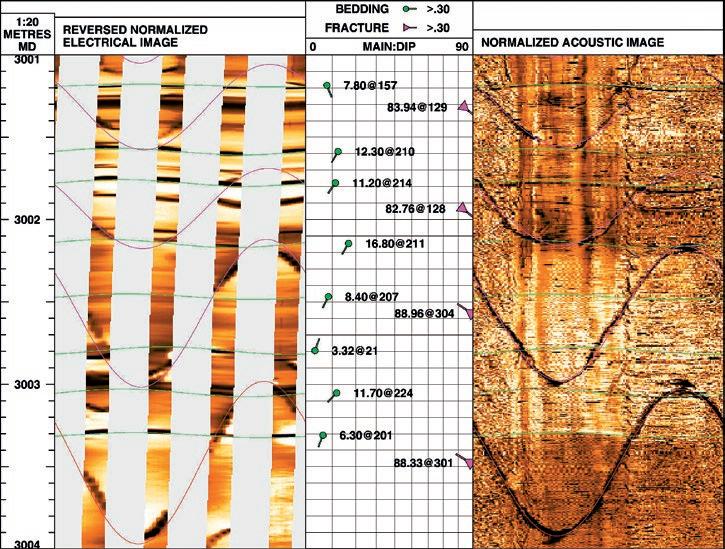
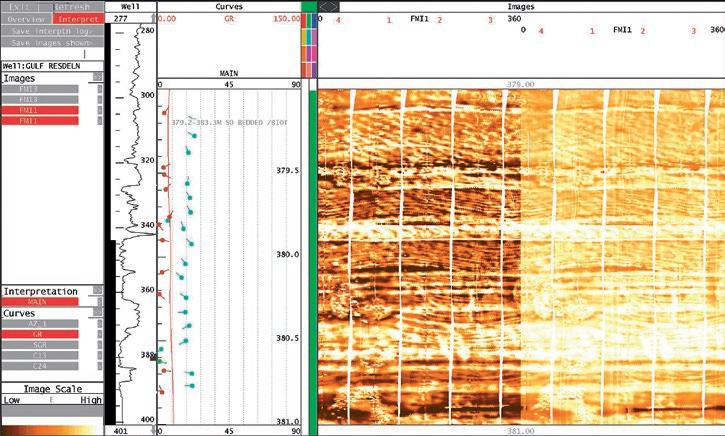
RESERVOIR ISSUE 01 • JANUARY 2015 31
Figure 2. Electrical (left) and acoustic amplitude (right) borehole images over the same section of well.
Figure 3: Dynamically normalized (left) and statically normalized image (right) showing fine planar-tabular crossbedding cut by frequent flat erosional surfaces.
induced fractures. Analyzing these features (their shape, width and orientation), gives valuable insight into in situ stresses. Stress-induced features are the most important an unequivocal data source for input into modeling to determine the maximum horizontal stress, which cannot be accurately measured, calculated or estimated using any other approach (Barton et al., 1997).
WHY AREN’T IMAGE LOGS RUN MORE OFTEN?
In addition to the engineering-oriented atmosphere of the oil and gas industry mentioned previously, the two main roadblocks to image data acquisition are costs and technical challenges.
COSTS
Probably the number one reason why image logs aren’t run more often is that not running them is seen as a way to keep costs down. This approach baffles the authors and anyone else who understands how useful image logs can be (see previous section). Historically image logs were arguably a specialty log and were considerably more expensive than regular logs. They also often required a separate logging run and were more expensive should something go wrong and it had to be left in the ground. Today, as downhole tools become more sophisticated and combined tool strings allow for several tools to be run at once, the situation is different.
To put this in perspective, consider that the average combined drilling and completions cost per stage in the Duvernay is over $1,350,000 (Well Completions & Frac Database). Drilling costs alone are, on average, going more than half a million dollars over AFE. Completions are doing the same. Whatever the reason –drilling problems, completion problems, unexpected issues during hydraulic fracturing – $1,350,000 is more than 10 times the ballpark cost of running an image log. If an image log could prevent any of the problems being encountered, it would easily pay for itself, never mind how it might improve production by better understanding the reservoir rock and natural fractures.
TECHNICAL CHALLENGES
The utility of image logs faces challenges at every step from acquisition to interpretation. The original tools were made for vertical wells and, mainly, waterbased mud. With the onset of highly inclined and horizontal wells, tools


32 RESERVOIR ISSUE 01 • JANUARY 2015
Figure 4: In this image of a fractured horizontal well, the bedding is shown by the sub-vertical black features seen easiest in the static image on the right. The parallel, low-angle conductive (dark coloured) sinusoids are open fractures. The healed fractures are the inclined features that show differential colour shading above and below the sinusoid apexes typical of mineralized fractures.
(...Continued from page 31)
Figure 5: Drilling induced (tensile) fractures usually appear as a pair of vertical, inclined or curved en échelon conductive cracks as seen in the image on the left. In the image on the right breakouts appear as a pair of boreholeparallel conductive blobs of varying width depending on drilling conditions and rock mechanical properties. Tensile fractures can also be seen at the top of the right-hand image oriented roughly 90° to the wellbore breakouts.
had to be modified to stay centered, to fit into narrow boreholes, as well as developing alternate means of recording and communicating the data to the surface, including wireline, through-mud LWD and memory logging options. Special electrical imaging tools had to be developed to run in oil-based mud, and thankfully we are starting to see major improvements in the second generation of these tools. Some more mundane considerations are that there are minimum and maximum borehole radius limits for some tools, while others can’t handle high pressures and/or high temperatures.
BOREHOLE IMAGE PROCESSING
Borehole image processing, like seismic or sonic waveform processing is a speciality science unto itself, and can be done by the logging service companies or via thirdparty processing or in-house processing through a variety of commercially available software platforms.
In addition to the raw resistivity (or other) image measurements, tool orientation is measured with tri-axial accelerometer and magnetometers, and the radial pad position is measured with calipers. These raw orientation measurements must first be properly calibrated (and corrected when measurements fail or fail to compare favourably with driller’s deviation surveys), and then depth (speed) corrected to remove stick-and pull and other misalignments resulting from the image tool being momentarily stuck while, at the surface, depth measurements keep accumulating as the cable stretches.
Once depth correction is complete (and after confirming that the log depth is consistent to other measurements such as the main density log), the image measurement is corrected for bad electrodes and for differences in calibration or gain between pads. A pair of images are generated, the first, a static image where colours are assigned on a single colour palette over the whole image interval and the second, a dynamic image where colours are assigned based on a sliding window (usually 1-2 metres in length) to enhance image contrast. Finally, any misalignments between pads or between images logged in the same borehole should be corrected to make an ideal image for interpretation.
Image artifacts include physical artifacts (like bit marks or smearing from oil in the mud filter cake), acquisition-related artifacts (such wood-grain artifacts for off-centered acoustic images, dead buttons or pads from wear and tear, over-speed or pipe-break artifacts), and processingrelated artifacts (including incorrectly corrected pulls, and pads displayed in the wrong position around the borehole), see Lofts, 1999 for an expanded list of potential image artifacts.
Some of these artifacts can be fixed and others obscure or prevent the primary measurement so it takes a great deal training to see through the unavoidable ones and to recognize those that can be corrected. Because many of these artifacts have similar appearances and quite widely varying origins, caution must be taken when processing borehole image data – a
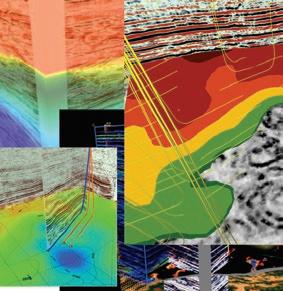
push of the button by an inexperienced processor can lead to disaster.
IMAGE INTERPRETATION
Feature recognition software has come a long ways from the first computer dipmeter computations, but hand-interpretation of bedding and fracture events is always going to be superior to automatic computations given that most reservoirs show multiple layers of features at the same depth (for example, a cross-bedded, truncated sand with both natural and induced fractures at the same depth).
Typical interpretation pitfalls include an over-reliance on potentially poor automatic dips, copying and pasting bed dips (which can introduce false, stepped patterns of bedding), and a lack of understanding which features are related to borehole failure, which are noise and which are natural. The latter is especially important in horizontal and deviated wells where the induced fracture geometries become noticeably less-planar and more similar to natural features.
Other interpretation frustrations result simply from changes in interpreter (perhaps through changes in logging service company), which results in changes in the definitions of what is and what is not a relevant feature. This can make comparing the fracture intensity between wells imaged and interpreted by competing logging companies very difficult, for example. Further, the particular orientation of a given borehole can greatly affect which (Continued on page 34...)


RESERVOIR ISSUE 01 • JANUARY 2015 33
® FIRST geology interpretation software on Windows FIRST to incorporate workflows for unconventional plays FIRST for seismic-inclusive geosteering FIRST choice of shale operators www.lmkr.com/geographix Discover Your Potential LMKR Holdings is the exclusive world-wide licensor and distributor of GeoGraphix® software. Windows is a registered trademark of Microsoft Corporation. GeoGraphix® is a registered trademark of Landmark Graphics Corporation. The LMKR Logo is a trademark of LMKR Holdings.
CORPORATE SUPPORTERS
CL Consultants
Exova Canada Inc
Enviro-Tech Surveys Ltd
Pulse Seismic Inc
Canada Brokerlink Inc.
Energy Navigator
Serpa Petroleum Consulting Ltd.
Belloy Petroleum Consulting
Sigma Explorations
Canadian Discovery Ltd.
GeoSpace Technologies
Canacol Energy Ltd.
Explor
Sproule International Limited
Target Data Ltd.
Birchcliff Energy Ltd.
Cabra Enterprises Ltd.
Cougar Consultants, Inc.
Petrocraft Products Ltd.
EDGE Technologies
HEF Petrophysical Consulting Inc.
SAExploration
RIGSAT Communications
Glacier Exploration Surveys
Matrix Solutions Inc.
National Oilwell Varco
Sensor Geophysical Ltd.
AAPG - Canada region
Cossack Land Services Ltd.
Deloitte Petroleum Services Group
EPI Group
FMQ Southern Exploration
GeoChemTech Inc.
Geotir
Hurry Hydrocarbons
Matrix Geoservices Ltd.
Maxam Seismic Explosives
Osum Oil Sands Corp.
Petrel Robertson Consulting Ltd.
Spectrum
Statcom Ltd.
Sourcex
Caracal Energy Inc.
Bankers Petroleum Ltd.
BJV Exploration Partnership
SOCO International
3e Royalties
Bengal Energy
Bounty Developments Ltd.
Brasoil Corp.
Bukit Energy
Central European Petroleum Ltd
DualEx Energy International
Franconia Geoscience
Gran Tierra Energy Inc.
International Petroleum Consulting
Jenner Geoconsulting Inc.
Korean National Oil Company
Long Reach Resources Ltd.
Lorne LeClerc & Associates
Madison Petrogas Ltd.
Petroamerica
Serinus Energy
Sherritt International Corporation
Skyhawk Exploration
Tretio Exploration Ltd
Valeura Energy
AS OF DECEMBER 3, 2014
features are visible (vertical fractures are seldom intersected in a vertical well), so bias from borehole orientation should be considered when making statements about feature populations.
CONCLUSION
Although image logs have been around for a long time, our current challenge is in reminding industry of the value in acquiring them. As we struggle to understand what drives production in resource plays and other unconventional resources, image logs can provide a wealth of information regarding geology, structure, natural fractures and in situ stress at scales more appropriate for understanding individual wells than seismic data. For those who currently rely on images logs, the largest challenge is in getting those interpretations in a timely fashion with enough consistency from well to well to be able to influence drilling and completions decisions in real time.
For more about borehole image log tools and data, as well as applications and case studies, see AAPG Memoir 92 (Pöppelreiter et al., 2010).
The next article in this series, Part 2: Analysis of Structure and Fractures in Image Logs, will explore in greater detail
the structural information that can be derived from image logs as well as the insight image logs can provide regarding natural fracture populations.
REFERENCES
Barton, C., Moos, D., Peska, P, Zoback, M.D., 1997, Utilizing wellbore image data to determine the complete stress tensor: application to permeability anisotropy and wellbore stability, The Log Analyst, NovemberDecember 1997, p. 21–33.
Lofts, J.C., Bourke, L.T., 1999, The recognition of artefacts (sic) from acoustic and resistivity borehole imaging devices, in Borehole Imaging: Applications and Case Histories, Geological Society, London, Special Publications, 159, p. 59–76
Pöppelreiter, M., C. García-Carballido and M.A. Kraaijveld (eds.), 2010, Dipmeter and Borehole Image Log Technology, American Association of Petroleum Geologists Memoir 92.
Thompson, L.B., 2009, Atlas of Borehole Imagery (2nd Edition), American Association of Petroleum Geologists Discovery Series No. 13.
NALYSIS COURSES
For Engineers, Geologists, Geophysicists, and Technologists
PRACTICALQUANTITATIVE LOG ANALYSIS
Every April and October in Calgary
Details / Registration at www.spec2000.net/00-coursedates.htm
NARRATED MULTI-MEDIA SELF STUDYCOURSES
Slide Shows, Reference Manuals, and Exercises Included
AV-01 Practical Quantitative Log Analysis
AV-02 Advanced Quantitative Log Analysis
AV-03 Analysis of Unconventional Reservoirs
Details / Order Online at: www.spec2000.net/00-av-training.htm
Single-User, Corporate, and Academic Licenses Available Individual Reference Manuals and Slide Shows Available Separately
CRAIN’S PETROPHYSICAL HANDBOOK ONLINE
Shareware Petrophysical Encyclopedia at www.spec2000.net
50+ Years Of Experience At Your Fingertips
=== E. R. (Ross) Crain. P.Eng. 1-403-845-2527 ross@spec2000.net ===
34 RESERVOIR ISSUE 01 • JANUARY 2015
(...Continued from page 33 ) CRAIN’S LOG A
Welcome to your Professional Career Home

Go where the passionate geoscientists are
Discuss the science
Socialize within a like -minded community
Grow your specialty by attending our conferences
Engage in qualified professional development (PDH accredited)
Meet industry
Volunteer and be on a team
Develop leadership skills
Get introduced to geoscience software tools
Access to technical journals on AAPGDatapages and GeoScienceWorld
Leave your legacy where you are most passionate
Join us and be part of the team that advances the professions of the energy geosciences – as it applies to geology


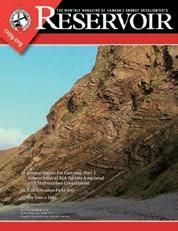
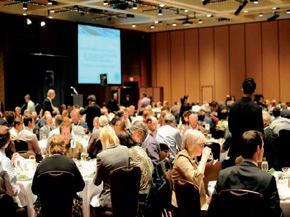

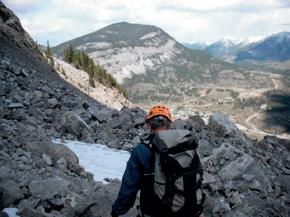

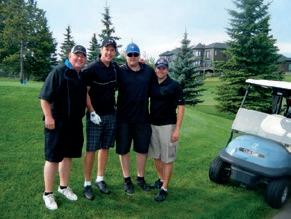



Distinguished Lecturer Series Go Take a Hike Mixed Golf Tournament Student Industry Field Trip
Membership has its Advantages!
JOIN TODAY VISIT WWW.CSPG.ORG TO BECOME A MEMBER TODAY
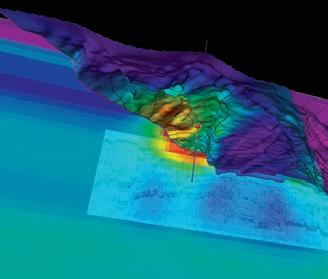
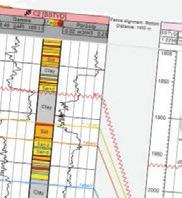
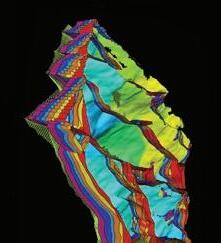
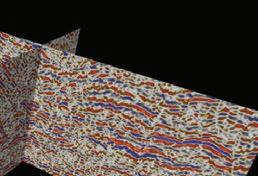
Blueback Reservoir the preferred and chosen GeoScience Solutions Partner Try something new. Find something better. Blueback Rock Physics plug-in for Petrel* Bridging the gap between geology and geophysics The complete suite of rock physics tools for quantitative interpretation across multiple domains within Petrel. Blueback Reservoir blueback-reservoir.com E sales@blueback-reservoir.com | T +1 403 538 4821 blueback-reservoir.com/rockphysics *Mark of Schlumberger 4000 5000 6000 8000 9000 10000 11000 12000 7000 13000 14000 15000 16000 Acoustic impedance (kP a.s/m) 17000 1.4 1.5 1.7 1.6 P/S velocity ratio 1.8 1.9 2.0 2.1 2.2 2.3 2.4 2.5 2.6 2.7 2.8 Por=0.4 Por=0.35 Por=0.3 Por=0.25 Por=0.2 Por=0.15 Por=0.1 Vol shl=0.6 Vol shl=0.4 Vol shl=0.2 Reservoir Properties
Wells Petrel




















































































































